
13218307041
Superscript
Managing Screentime
for Early Learners
How to Find A Healthy Balance
Love it or hate it, screen time for kids is here to stay. Now more than ever, it is an inevitable part of our children’s daily lives to teach, entertain, and stay connected to family and friends.
You might ask yourself, “How much screen time is healthy?” or “How much screen time is too much?” How do we use technology positively?
What can we do to balance screen use and other healthy habits? What are some screen time alternatives?
Dive in below for answers, tips, and recommendations.

Staying Connected With Family And Friends Through Video Chatting.
Kids And Screen Time
For good reasons, pediatricians have urged parents to monitor screen time for children. There are real concerns about young children spending too much time in front of a screen.
The challenge is looking for a positive and healthy balance between kids and screens. What’s suitable for one family may not work for another.
What Are The Effects Of Too Much?
More studies are needed, but concerns include the effect of too much screen time on toddlers’ childhood development, including gross motor, social-emotional, language, and cognitive development.
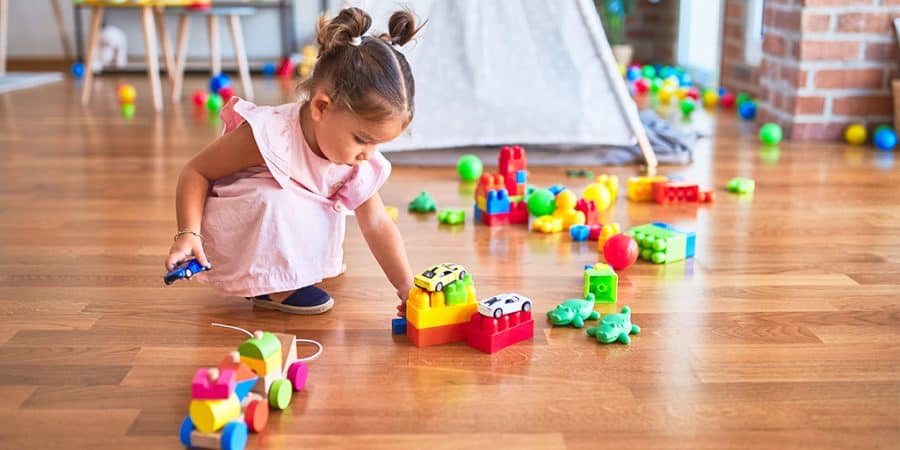
Too much screen use can impact how well children sleep at night and put them at risk for anxiety, depression, and learning difficulties, precisely attention problems.
Increased screen time diminishes creativity and problem-solving.
Less physical activity and more sedentary activities like screen use increase the risk of obesity.
Not to mention, ads for unhealthy foods can lead to poor food choices.
Finally, sitting in front of a screen is often associated with mindless snacking.
Too much screen time for kids can affect their vision.
Ensure your child keeps the screen 20 inches from their eyes.
Take breaks every 20 minutes to reduce eye strain.
Pay attention to room lighting and avoid using devices in overly bright sunlight or dark rooms.
Forming good habits early is important, so create best practices, set limits, and model good screen time behavior.
Try Some of These Tips To Help You Manage Screen Time
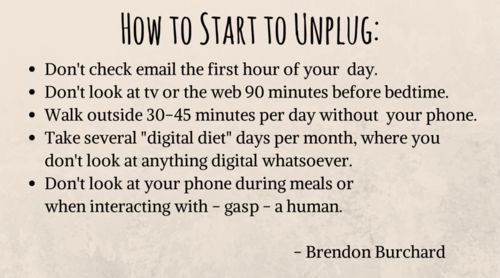
Your family goals should center around making sure that technology is not interfering with more important developmental activities. They are also not suggesting you throw out all the good habits you have developed.
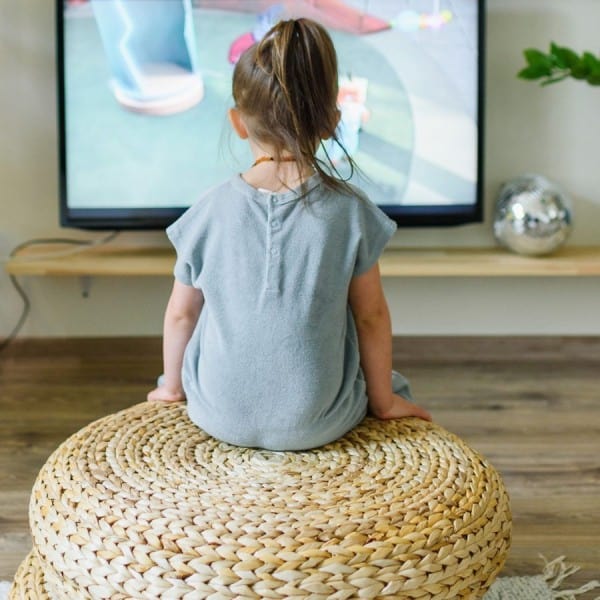
TV Plays A Large Role
In Our Young Children’s Screen Time.
TV time for kids
TV plays a large role in how much screen time young children consume.
Often, it is nothing more than a distraction or background noise.
Try these simple ways to cut TV time for kids.
Turn off the TV during other activities and mealtimes.
Use music as background noise rather than turning on the TV.
Encourage And Suggest Other Types of Play,
Especially Outdoor Play
Kids need daily play and physical activity. As a matter of fact, the CDC recommends at least 60 minutes a day. If you can’t get outside, try yoga for kids, turn on some music, and have a dance party or even musical chairs to get them moving.
It is important to schedule physical activity daily, even if it is just a family walk after dinner.
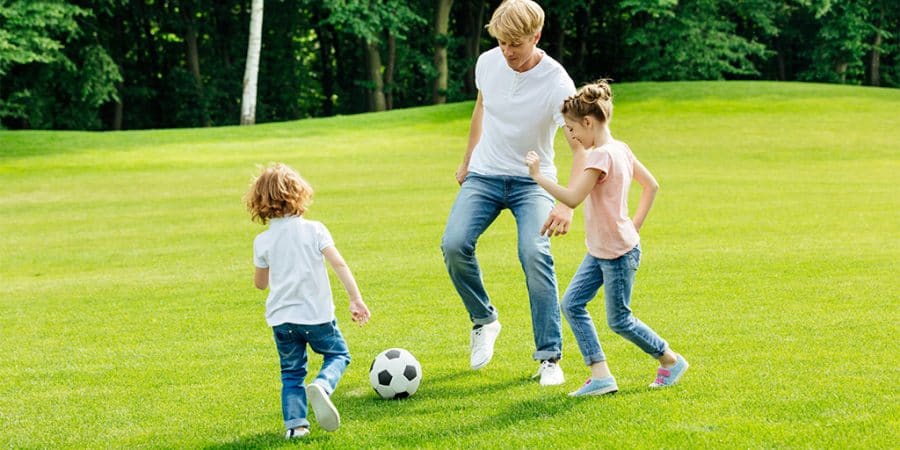
Get Outside For minimum of 60 Minutes Of Outdoor Physical Activity.
Establish Adequate Sleep Habits
Children, depending on their age and development, need 10+ hours of sleep daily. In addition to getting the recommended amount of sleep, establish no screen time for 1-2 hours before bed. Studies show that blue light affects the quality and natural sleep patterns.
Create Screen-Free Zones
The most important screen-free zones are the kid’s bedrooms, the dining room, and a place for activities or homework.
Make bedrooms a screen-free zone. Remove TVs, computers, video games, and other devices from your child’s rooms. Establishing the bedroom as a screen-free zone now while the kids are young will help build healthy habits when they become teenagers. Many teens have been known to stay up all night texting and chatting.
Mealtime should be kept sacred for open communication and family connection. Furthermore, not being glued to a digital device while eating helps to create healthy habits.
Setting up a place for play activities or homework (older children) that is screen-free removes distractions and allows your child to be engaged.
Model Good Screen Time Behavior
Set limits for your own screen use. Engage in focused quality time with your child daily (use do not disturb on your phone.)
Establishing this focused time may reduce other attention-seeking behaviors at different times. Avoid using your phone or TV to escape.
Avoid Using Digital Devices As Babysitters
Find or create alternative activities to entertain them.Books, playdough, art supplies, puzzles, or open-ended toys like wooden building blocks are all great alternatives.
There is a link between social-emotional delays in children when media has been used as a calming tool. Check out the Elmo Belly Breathe video.

Technology Provides Access to Learning New Skills.
Offer Screen Time Alternatives
One way to find a healthy balance with technology is to put down the devices and play more. Below are several suggestions for less screen time and more playtime!
Enjoy Physical Games: Try playing Freeze Tag, Simon Says, or Red Light, Green Light. Try some fun obstacle courses or relay races with giant building blocks.
Read Traditional Printed Books: Research indicates that reading printed books rather than on a digital device resulted in better comprehension.
Make Music: No instruments? No problem! Get out some wooden spoons, pots, and pans to make music.
Create Art: Providing blank paper and crayons, markers, and paints allows your children the freedom to express themselves. Keep a box of art supplies on hand, like pipe cleaners, pom poms, and more, for fun spur-of-the-moment projects. Or take your art outside with sidewalk chalk. Want a done-for-you solution for STEAM/STEM activities? Try Green Kids Crafts!
Cook Together: Involve the kids in choosing and making healthy lunches and snacks. Let the kids help with meal planning and prep. Maybe they get to pick and help prepare the dessert. The more they are involved, the more likely they are to eat better.
Dance: Kids love music and dancing.
Get Outside: Go on a scavenger or adventure walk. How about a bike ride, hike, or walk to the park? To really enjoy the time, leave your phone at home (or if concerned about safety, put it on Do Not Disturb.)
Play More: Enjoy imaginative play or block activities to gain insight into your child’s thoughts, feelings, imagination, and creativity.
Board Games: Play stimulating, fast-moving board and card games.
There is an old Asian saying that roughly translates into “When dealing with children, you must speak their language.” It’s just easier for everyone if parents adapt themselves to their children’s needs and create a nurturing environment to allow them to be who they want to be.
Hobbies are a significant part of children’s world. These hobbies are, in fact, the most effective way for children to learn new things and develop new skills. Ignoring a child’s interests can have lasting detrimental effects on their development, which may continue into adulthood.
Prioritizing Your
Children’s Interests
Children’s Interests
A child’s interest can be anything that grabs their attention. It can be a toy, game, or activity that brings out the best in them. These interests have different degrees. For example, your child is watching his/her favourite cartoon on TV when he/she overhears you talking about going camping. Your child will give up the cartoon and start asking questions about this out-of-the-blue camping trip.
Children’s interests can be divided into two main categories.
Children’s Personal Interests
Personal interests refer to the child’s favourite activity or toy. For example, they might be crazy about a bubble maker or go “vroom vroom” when controlling their RC car on the floor.
Children’s Situational Interests
Situational interests refer to the activities that emerge as the child is exposed to a new setting or experience. Let’s say candy is a personal interest, but trick-or-treating on Halloween is a situational interest.
Read more: Identifying a Child’s Interests
We have expanded on “What are your child’s interests?” and how to identify them in a separate post. I highly recommend reading the article before or after this one to have a clear understanding of your child’s interests. Here, we’ll focus on the instances that children find interesting.
Children’s Interests Examples
There is no concrete typology for children’s interests, but I’ve summarised them into four main groups based on the nature of the activities. You can do some of these activities at home with your children, but you need to sign them up for activities that require a special tools environment.Children’s interests examples
Creating Interests in Arts and Crafts

These interests are observable in most children. Hobbies in arts and crafts allow children to be imaginative and creative. They can express their feelings and communicate with you in what they create. Moreover, creating something out of something else gives children a sense of accomplishment.
Painting and drawing: Children can visually express themselves and their grasp of the real world. They can also experiment with colours and shapes and gradually develop a sense of aesthetics.
Sculpting: Sculpting is a great way to familiarise children with 3D shapes and develop spatial awareness. It also takes lots of time and effort, which makes the children more persistent.
Photography: At a basic level, photography encourages children to pay more attention to their surroundings and appreciate details. Additionally, it develops digital competence.
Origami: It’s a good hobby for concentration and precision. Creating different forms or shapes with paper improvesfine motor skills.
Pottery: Working with clay is generally enjoyable. Pottery engages the tactile sense and enhances sensory development.
Develop Performance-based Interests
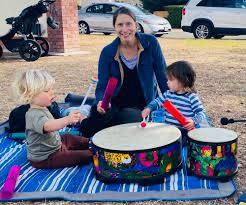
Desiring attention is not limited to childhood, but it’s more evident in children. Performance-based activities give children the spotlight. These activities are healthy means of grabbing the attention of the people around them, particularly you.
Theatre and acting: It’s a great way to help shy children become more self-assured and comfortable in social situations. It also helps them develop a sense of empathy by playing different roles. Click to learn more about “How to build confidence in children.”
Musical instruments: Learning to play instruments is all about practice and dedication. It engages both the mind and the body, which improves motor skills. In addition, learning and remembering notes and rhythms enhances the child’s memory.
Dancing: It involves physical coordination and improves the child’s balance and agility. If they perform in group dances, they can also gain social skills.
Storytelling: First and foremost, storytelling improves speaking. Young children learn communication skills through storytelling. Furthermore, it improves the child’s vocabulary and leads to the composition of longer and more complex sentences. Overall, storytelling fosters imaginative thinking and language skills.
Experiment with Science-Related Interests

Although this isn’t a definite sign, a child’s interest in certain phenomena can predicate their interest in the respective science. I recall a time when I was crazy about anything related to paper. I was good at drawing, and later, I got excellent grades in literature and essay writing. And now, here I am, making a living out of a sophisticated way of playing with pencil and paper. Our STEAM resources are under the "Incredible Families Unplug" tab under.
Astronomy: This is an exhilarating subject for all ages. Astronomy is a good subject for curious kids who want to know what’s out there in the universe.
Robotics: If your child is passionate about robots and creates good ones with the given tools, you may have an engineer in your hands. Robotics can teach children thebasics of cause and effect and promote logical thinking.
Gardening: I still remember the beans I had to grow for science class. It was fantastic to see that I made a living organism. I looked after my plant until it grew and matured. It was an early instance of responsibility. So, you can encourage your children to do some gardening and make them responsible for a task they can accomplish, like planting a tree and watering it regularly.
Computers: You need little effort to get your child interested in computers. Even playing computer games can help them gain digital competence. So just put them near a computer, and they’re a couple of questions away from working with it.
Developing Interests in Athletic Activities
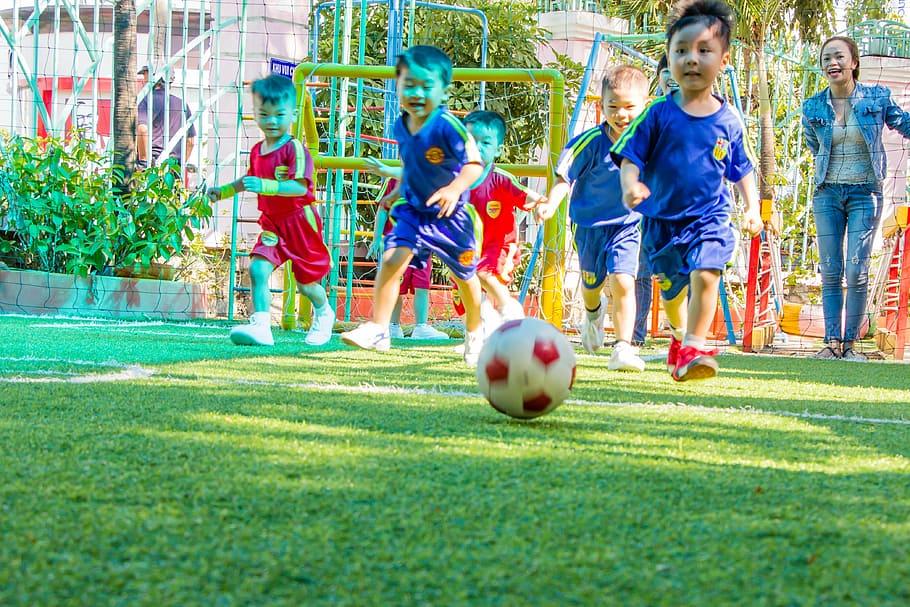
To state the obvious, interest in athletic hobbies is good for children’s health. It’s a safe channel for them to drain their energy, which helps them sleep earlier and tighter (which means you can sleep better). Sports teach them how to handle wins and losses in competitions and give them an excellent opportunity to make new friends. More than that, sports or even simple outdoor activities like camping are a great way to bond with your kids and create meaningful experiences.
Swimming: Learning to swim is a vital life skill. That aside, children love playing with water and with the right instructions, they become professional swimmers at a young age. Plus, swimming is a full-body exercise that builds endurance and strength.
Martial Arts: Martial arts develop agility and stamina. It’s also a good way for children to defend themselves and not worry about being bullied. Of course, they should also learn to control themselves and respect others.
Soccer: It’s the number-one sport in the UK, and your child might be a future star player. The best thing about soccer is that it teaches teamwork. Additionally, it makes the children think strategically to win.
Gymnastics: The sport improves balance and flexibility. Also, it’s really beneficial to start gymnastics at an early age if your child shows interest in it.
RELATED: Need some more ideas for kids at home?
Try this free Summer Camp at Home program
– it’s six weeks of fun.
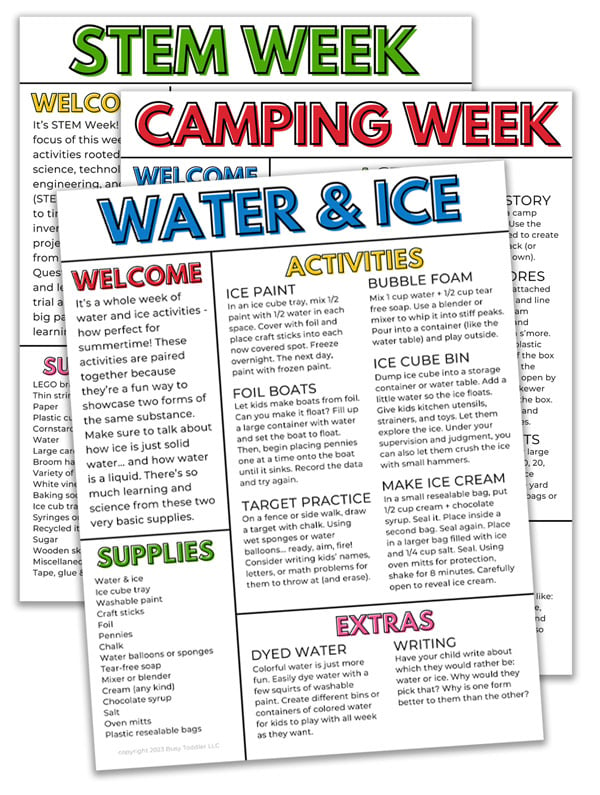
Free Summer Camp at Home
Download Busy Toddler’s free 6-week summer camp program for toddlers to elementary-agekids
EASY FUN FOR FAMILIES ALL SUMMER LONG

Our Outdoor Play Resources
The Green Hour Program and Suggestions Page
Why to Commit to a Family
Green Hour?
The idea of a “Green Hour” comes from research on creative play and health by the Centers for Disease Control and the American Academy of Pediatrics. Research also shows the best way to connect young people to a lifelong concern for nature, wildlife, and the outdoors is through regular positive experiences with nature.
Studies show outdoor time helps children grow lean and strong, enhances imaginations and attention spans, decreases aggression, and boosts classroom performance. In addition, children who spend time in nature regularly are shown to become better stewards of the environment.
Planning Outdoor Play By The Season
For those that do not have a backyard
Idea #1: Take a nature walk around the block.
Nothing beats a walk around your block and some quiet focus to see things you might not have noticed before. There are tons of ways to turn a routine walk into a nature adventure – here are 25 of my favorite ideas.
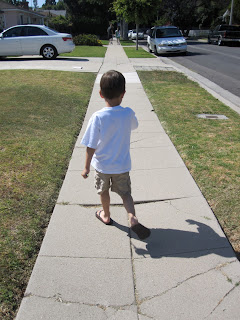
Idea #2: Try container gardening.
Both Sarah and Kari point out that window boxes, small planters and pots are perfect for those with little-to-no outdoor space. Flowers and veggies – along with bird feeders and even birdbaths – bring nature right to your back door.
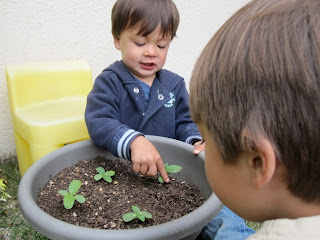
And if you don’t have patio space, Stephanie has another idea: See if a rooftop garden is an option.
Idea #3: Go on a micro safari.
All you need to get started is a magnifying glass (a cardboard toilet paper roll will work, too). Head out the door and take a close-up view of the tiny plants that live in walls and on buildings.
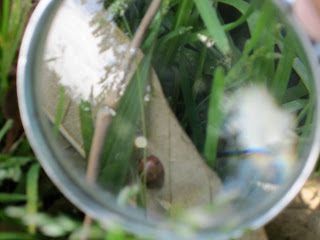
Family Adventure Guidebooks add a twist to this idea. Make a foot-by-foot square on a piece of grass at the park and see how many critters you can find.
Idea #4: Take advantage of public transportation.
My kids consider a ride on the bus an adventure. Several of you suggested that using public transportation is one way to make outdoor excursions beyond your own neighborhood more affordable.
Idea #5: Plan for one special nature adventure per month.
Sarah of Wandering Off suggested budgeting ahead for one adventure to a nature park or other locale per month (or once every other month depending on your budget).

Another great idea from Joan B. is to get together with other moms and carpool. Bonus is you get to share nature with friends ! Here’s a list of 30 favorite day trip adventures in nature to get you planning.
Idea #6: Look into community resources.
My friend Lois and her now 12-year-old daughter got involved with planting trees through the urban planning department in their city.
I would suggest contacting your local or state parks office. Most parks organize monthly nature programs for a small fee – or for free. Many offer nature-inspired programming.
Park Finder - Find Your Park
Good news — you're one step closer to Finding Your Park. Whether you’re looking for a specific activity or trying to locate a park near you, use the filters below to narrow your search and begin
Which park fits you?
The national parks are just as special and unique as you. Take our park quiz and discover the parks that are a perfect fit for you.

Both Angela and Nicole ofArrows Sent Forthpoint out the usefulness of local libraries, too. Even if they don’t like to explore libraries on your own, they are a great place to check out books about nature and even better, nature guidebooks.
Idea #7: Explore nature at neighborhood parks.
While it’s true that the playground usually takes center stage at neighborhood parks, that doesn’t mean that opportunities for nature play don’t exist, too. Check out 15 ways to explore nature at the park for some inspiration.
Really Cool Backyard Play Stations on a Budget Page
Free {or almost free} Cool Features to Add to Your Backyard Play Stations
Create fun and exciting backyard play stations for your child or your daycare for free or for few dollars! You don’t need expensive toys and fancy equipment to have an outdoor play area that will thrill your kids. These inexpensive ideas for a backyard play space will make your yard the funnest place in the neighbourhood.
The far corner of the backyard draws the children in like a magnet. It’s the play area in our backyard that’s entirely dedicated to the daycare kids, and it’s where the most care-free and magical moments of our day take place.
The old-fashioned simplicity of our outdoor play area makes it an enchanting place for kids to play, explore and learn.

There’s our play-house, and sandbox, which are popular for sure, and there is a myriad of other inexpensive play features that entertain, challenge and engage the hooligans for hours every day, all year long. It’s these play features I’m going to tell you about today.
Having an extraordinary outdoor play space doesn’t have to cost a fortune.
You may be thinking “But, how much does it cost to create a backyard playground like this?”
Well, that’s the beautiful part!
Aside from the playhouse and sandbox, which my husband built, most of the play features in our backyard cost next-to-nothing. In most cases, I’ve used items from around the house, thrift-shop finds, and various bits and pieces from nature to create this outdoor play area for the hooligans.
Tight-ropes, pulleys, water walls, balance beams… all just pennies to make, provide countless hours of fun and learning.
They spark the imagination, challenge gross motor skills and coordination, and encourage critical thinking and creativity.
Be sure to grab this printable list of 100 Fun Things To Do At Home This Summer too! Your kids will never be bored again!
Ready to have the funnest backyard on the block?
Genius, Free Things
to Add to your Backyard Play Stations
Click the links or photos below for the full instructions for each play yard feature.
Mobile Mud Pit
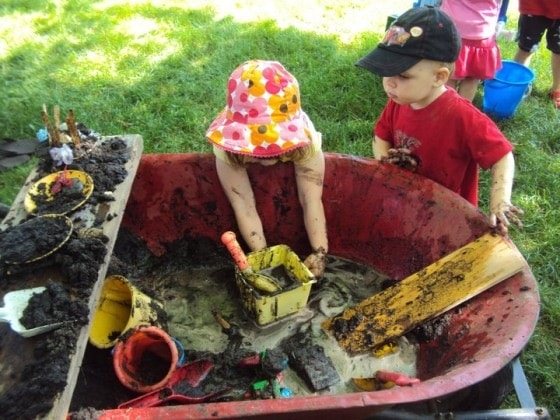
Want a mud-pit without sacrificing your lawn? Click here to check out our mobile mud-pit! Easy set up, easy clean up, and you can tuck it away at the end of the day.
Alternatively, you can buy this mud pie kitchen on Amazon.
Play Logs
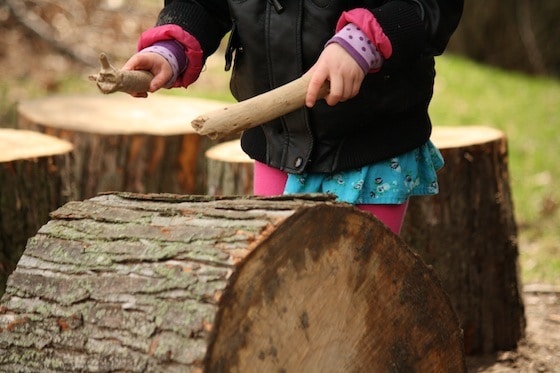
If you know anyone who’s having a tree cut down, see if you can score some play logs! They’re one of the most versatile and popular features in our backyard. Click here to see ours in action, and to find out more about them.
No space for logs? Check out these balancing buckets for indoor and outdoor use.
Pool Noodle Abacus
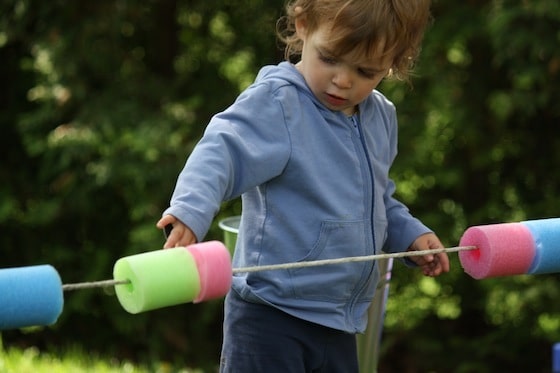
A backyard “abacus” is simple to make and provides lots of fun and learning. The toddlers love this one. Click here to learn more about our pool noodle abacus.
Repurpose an old white board
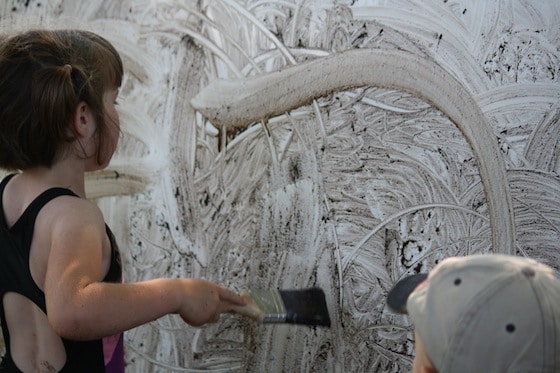
Got a white board that’s too marked up to use anymore? Move it outdoors! The hooligans got a couple of seasons of outdoor art out of this white board that was headed for the trash. Here, we’re painting with mud on International Mud Day.
Backyard Balance Beam
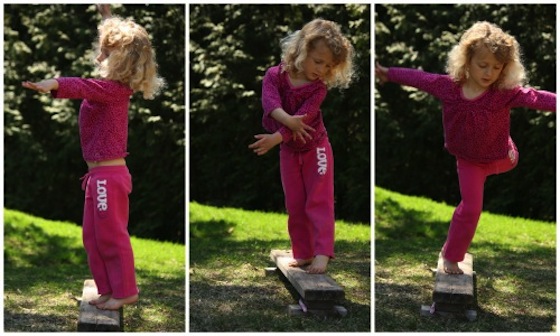
A few scrap pieces of wood make a toddler balance beam for a budding, young gymnast. It provides hours of pretend play and exercise and I can tuck it out of the way at the end of the day. Click here to see more of our outdoor balancing activities for toddlers and preschoolers.
A Rope and a Bucket
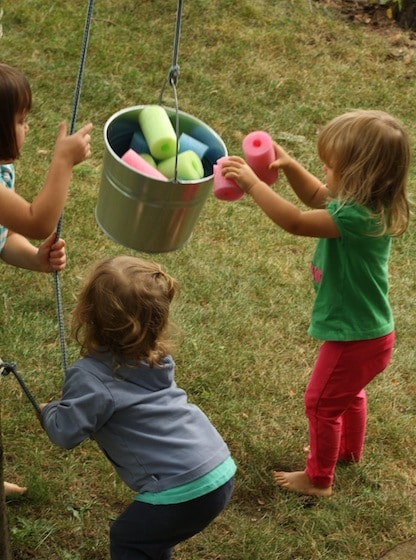
Without question, this simple contraption is one of the best things I’ve ever added to our backyard play area. The hooligans play with it all year round. Not only is it great for strengthening muscles and coordination, it also fosters team work, critical thinking and co-operation. See how I rigged up our Bucket & Rope Contraption here.
Homemade Water Wall
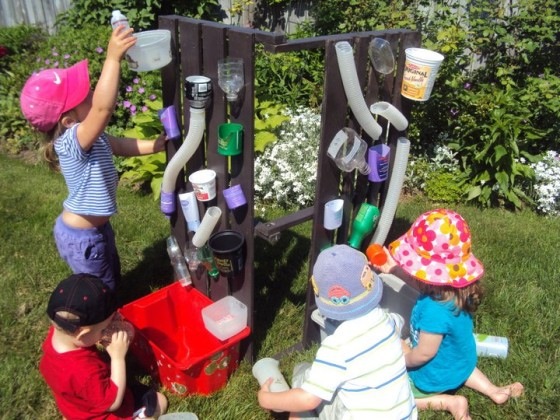
I made this water wall out of recyclables 4 years ago, and the hooligans are still playing with it. It’s provided them with hours and hours of fun and learning over the years. See how I made our water wall here.
Tire Swing
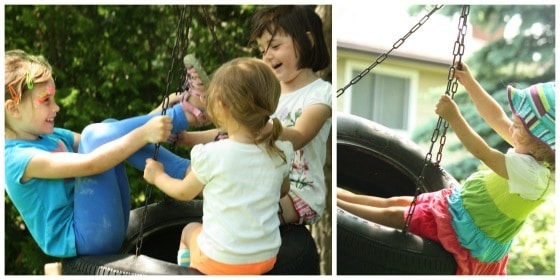
Our tire swing is another one of the most loved features in our back yard. An old tire, hung horizontally is perfect for one or for a bunch of kids to gather on. If your vehicle is due for new tires – perfect! If not, check with a local garage or service station. They may happily donate one to your backyard project. (photo only/no link)
Kid’s Clothesline
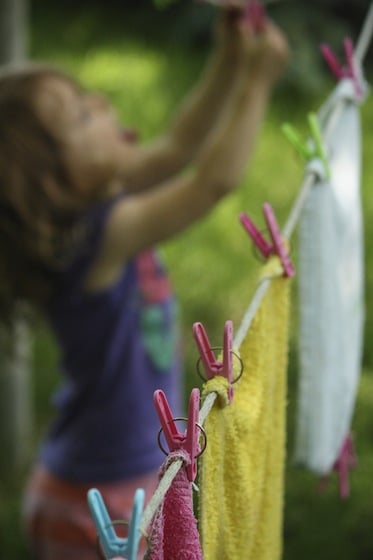
I rigged up this simple toddler clothesline years ago. Secured tightly so it’s not a safety concern, it’s just at the right height for the hooligans to use.
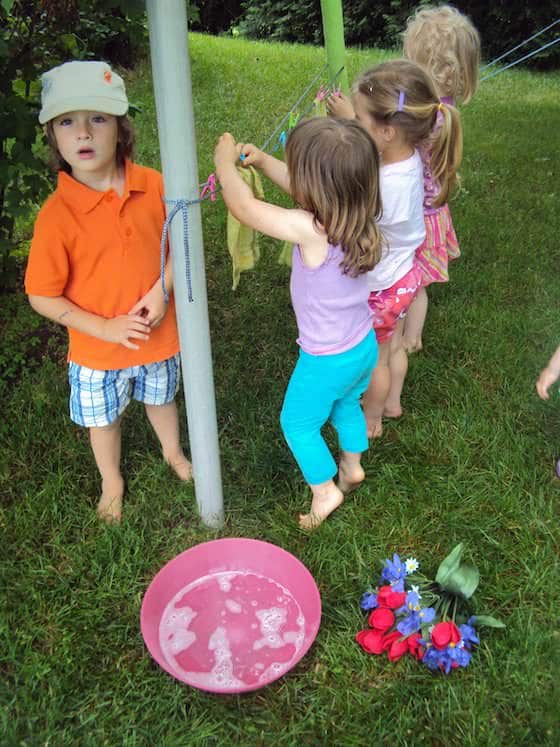
Our clothesline provides lots of opportunity for pretend play, and it’s great for teaching life skills, and developing coordination and fine-motor skills. Read more about our clothesline activities here.
Rocks and Stones
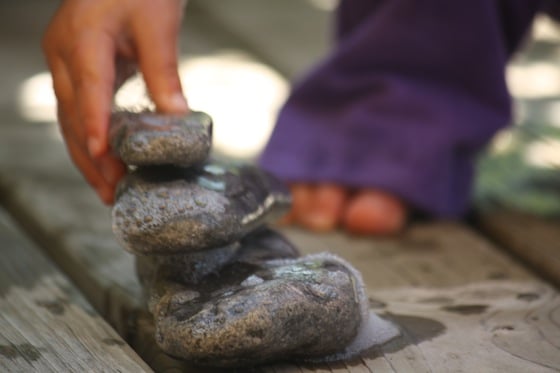
We’ve picked up loads of rocks and stones and even pebbles at the beach over the years. The children always have access to the rocks and stones in the yard, and they play with them daily. They’re kind of our backyard version of the building block – completely open-ended, they can be whatever the hooligans want them to be. See 10 ways that we use our stones and rocks here.
Sand Wall
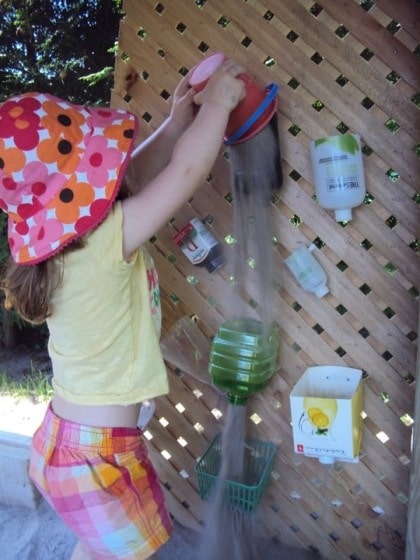
Much like the water wall, our sand wall is also made entirely out of scraps and recyclables. It’s positioned in our sandbox, and it’s provided loads of entertainment over the years. Read about our sandbox and sand wall here.
Artificial Flowers

Pick up a bunch of artificial flowers at the dollar store or at a thrift shop. Ours played with every single day. The kids hold “weddings”, they decorate the playhouse with them, they “plant” them in the sandbox. Not a day passes that these don’t get used in some creative manner. Check out one of my favourite artificial flower activities here.
DIY WATER TABLE/SENSORY TABLES
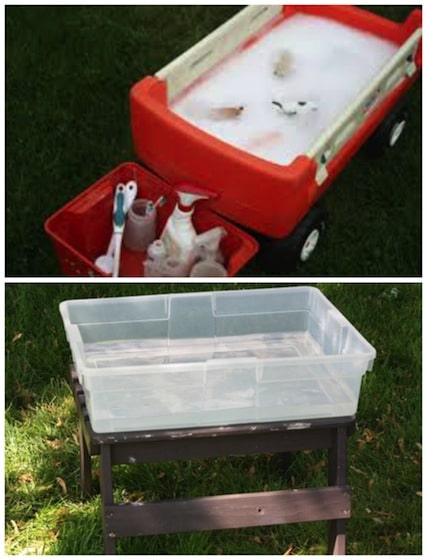
Water tables are awesome, but there was no way I was going to spend big money to get one when you can make your own so easily. I pull one of these together almost every day when the weather is nice. A storage bin set a top a bench or patio table or even an overturned (larger) storage container are all you need for all your water and sensory activities. If you don’t have storage containers, no worries – a child’s wagon also doubles as a water table for a group of kids to gather around. You can check out the way we use it for our water activities here.
Backyard Tight Rope
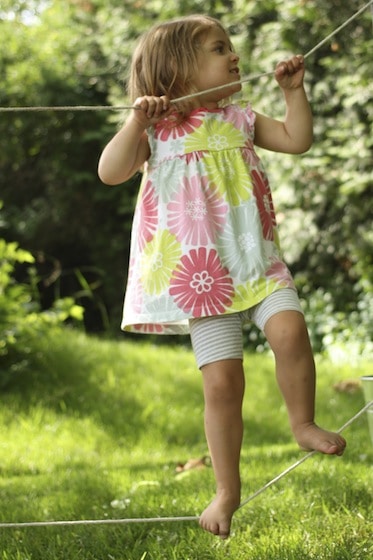
Best thing ever! This is right up there with the tire swing and the rope and bucket contraption. We’ve had our toddler tightrope set up in the yard for years. The hooligans use it every day, all year long even when the snow practically buries the bottom rope. It’s the best for coordination and gross-motor development. I’m not kidding when I say our tightrope has provided hundreds of hours of fun for kids from ages 1-7 over the years. Read all about it, and see how to make your own here.
Hoses and Funnels
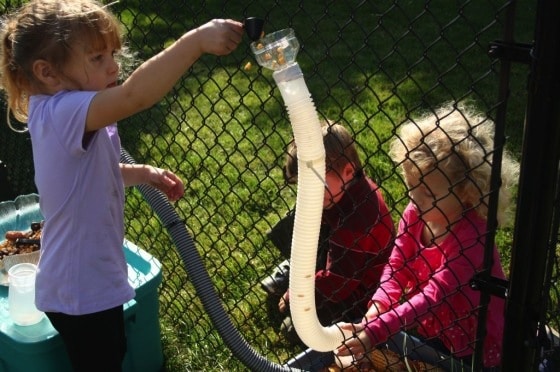
A couple of old pool hoses (or vacuum hoses) pushed through a chain link fence provide hours of fun and learning. Pop a funnel (or the top section of a water bottle) into the top each hose, and little ones will be kept occupied and entertained for ages. Read all about our hose and funnel runs here.
Thrift Shop Coffee Table
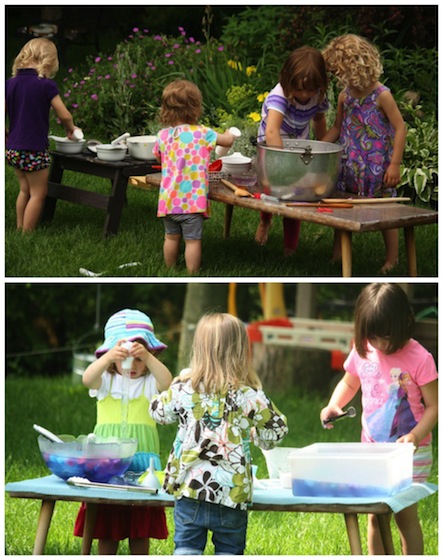
One of the best but least expensive investments I ever made for my daycare was this thrift shop coffee table. I got it for 6 dollars at a second-hand shop a couple of years ago, and we use it every day. In summer, it’s our backyard activity table, in winter it’s our art table in the craft room. Big enough for a crowd to gather around and water and paint spills don’t matter at all. See it in action here.
DIY Water Slide
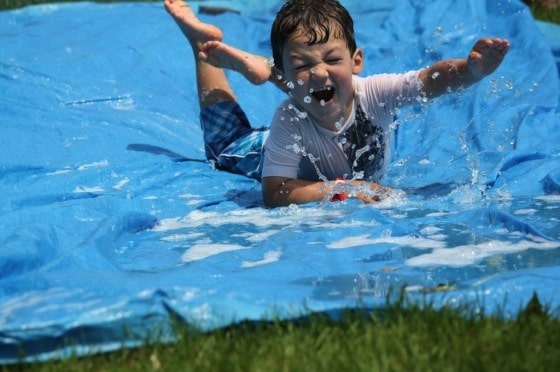
For the price of an inexpensive camping tarp, you can give your kids a whole day of wet, water, slippy-slidey fun! ! We’ve been doing this for years here in my daycare, and the kids never tire of it. See how to make your own waterside here.
Add “running water” to your outdoor play space
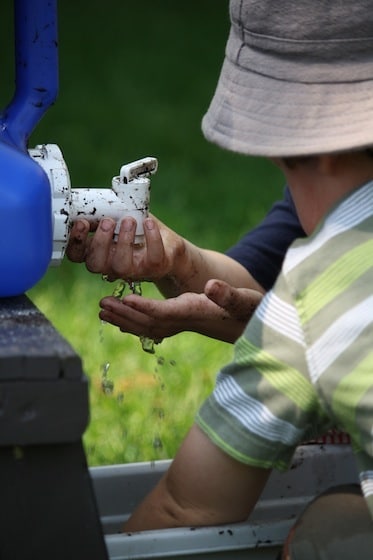
Lastly, my inexpensive trick for adding a source of running water to your child’s backyard play area. A camping jug! They're in abundance at the second hand-stores around here, so if you don’t have one of your own, you can probably scoop up a used one for a couple of bucks! See some of the ways we use ours here.
And there you have it!
18 inexpensive, super-fun, super-cool things you can add to your outdoor play space this summer! Your kids (and your neighbours’ kids) will love you for it!
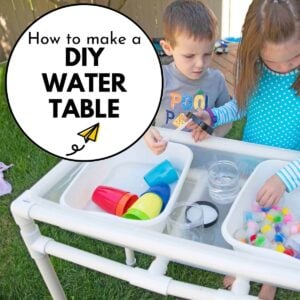
How to Make a DIY Water Table
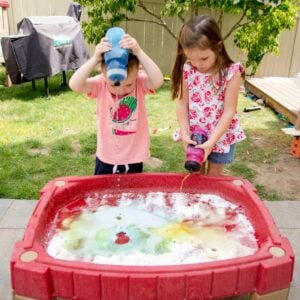
How to Make a Science Table
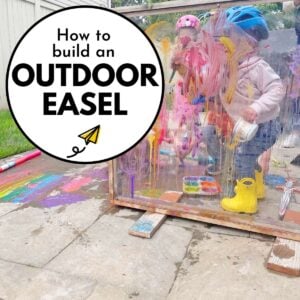
How to Make an Outdoor Easel
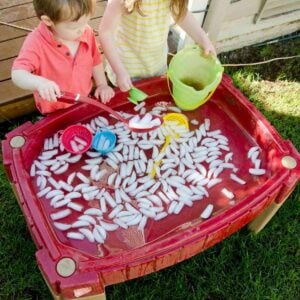
Ice Table Sensory Bin

Bubble Foam Water Table

How to Make an Outdoor Easel
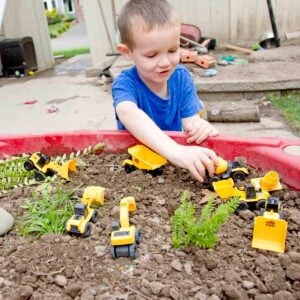
Construction Site Small World
Green Time vs Screen Time Tool
Green Time vs Screen Time
The Green Time vs Screen Time tool for families is a fun way to help you keep track of how much time your children are spending playing outdoors (‘green time’), versus time spent indoors, watching TV or on a device (‘screen time’).
Getting the balance right between green time and screen time is important for your kids’ health, cognitive and emotional development and will help them grow into the capable and resilient people you want them to be.
Plus green time is free, on your doorstep and the most fun kids can have! So let’s make sure our kids get outside and learn to enjoy the unstructured outdoor games we used to play!
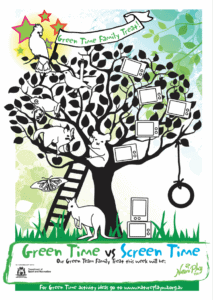
DOWNLOAD GREEN TIME VS SCREEN TIME RESOURCE
How to Use the Green Time vs Screen Time Tool:
Print the ‘Green Time vs Screen Time’ flyer and put it on your fridge.
Get the family together and agree on a family treat – something simple like a family bike ride, a trip to the beach or their favourite meal – and write it down in the space provided on the flyer.
Now, every day your children spend at least an hour outdoors in ‘green time’ they should colour in one of the native animals on the left.
Each time your children spend an hour indoors in ’screen time’ they should colour in one of the screens on the right.
The Aim: The aim is to colour in all of the ‘green time’ animals before all of the ‘screen time’ screens are coloured in.
The Prize: If all of the ‘green time’ animals are coloured in first then the prize is the family treat you agreed upon earlier in the week!
‘Green time’ can be spent at your local park or simply in your backyard, playing in the sand, climbing a tree or making a mud pie.
‘Screen time’ includes time spent on the computer, watching TV or movies.
‘Green time’ activities and places to go
If you’re a parent looking for ideas on how to get your children more involved in outdoor activities check out the Outdoor Apps section of website.
Why is ‘green time’ so important
The best reason why children should make the move from the TV or computer room to the outdoors is that it’s fun and you and your kids will be happier and healthier doing things together.
There is also a growing body of research showing that by bringing unstructured outdoor play (nature play) back into our children’s lives we can help their cognitive, emotional and physical development and ensure they build resilience and imagination that are so important for a fulfilling life.
How much ‘screen time’ is too much?
The National Physical Activity Guidelines recommend that for good health and development:
• Children younger than 2 years of age should not spend any time watching television or using other electronic media (DVDs, computer and other electronic games) and for children 2 to 5 years of age these activities should be limited to less than one hour per day.
• Children 5 – 12 years of age shouldn’t spend more than two hours a day using electronic media for entertainment (eg computer games, TV, internet), particularly during daylight hours.
Fun Ways for Kids to Collect and Craft With Nature
Love the idea of crafting with nature but not sure where to start? These nature printables offer fun ways to collect nature and create art with the most lovely crafting supplies around! Crafting with nature is the perfect way to connect kids with nature and helps you ditch plastic crafting supplies for natural and biodegradable material.
Here is a word of caution before you get started! When collecting pieces of nature, try to identify as many as possible and make sure you aren’t collecting anything poisonous or that could cause an allergic reaction.
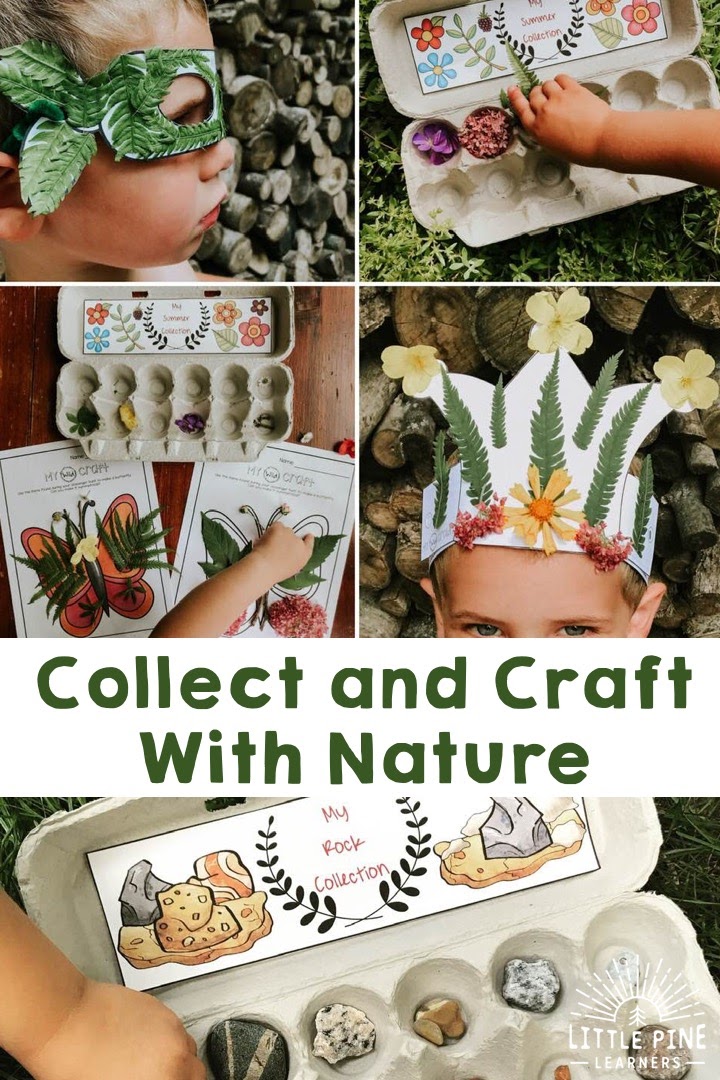
Ok, now onto the fun stuff! These activities are super easy because you can just print them and go! You don’t need to freehand any pictures or search for clip art online. Just print and head outside with your kids!
And guess what?? There are nature printables included in this packet for all year round! There are specific labels for all four seasons and different types of nature collections.
Ready to get started? Here’s what
Living in the Rocky Mountains when Hope was little was such a gift. Whether we were wandering down the dirt roads in our neighborhood (checking out the roadside flowers and herbs), walking on a trail in a park, or exploring on Mt.Falcon: Hope lived every moment to the fullest when she was outside. I talked to her about all sorts of things along the way, even before she could speak back. She would point at things she wanted to explore close up. Back then everything outside was an exciting discovery of new treasures in the wild. I often took pictures of what interested her to show her dad when he got home. We both loved our walks together. As she got older she wanted to save things from her adventures. Here are a few ways to use those treasures in an artistic way.
Outdoor Sticky Mural
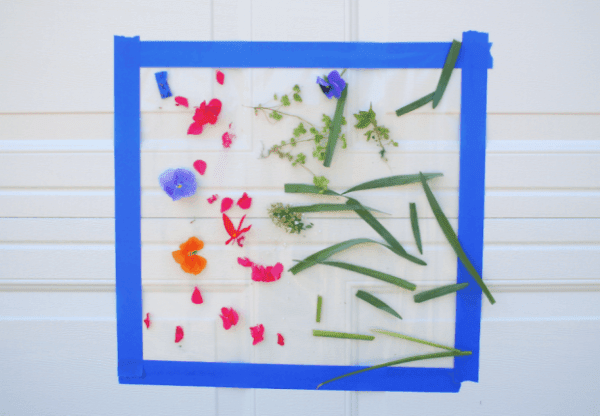
Nature is art, and you can also create your own custom art with elements from nature! I can Teach my Child has a lovely idea for an outdoor mural where toddlers can stick leaves, petals and whole flowers in any pattern of their choice. You’ll need contact paper for this activity, which you can stick to a wall or solid gate outside. Hand the children the materials and let them create art!
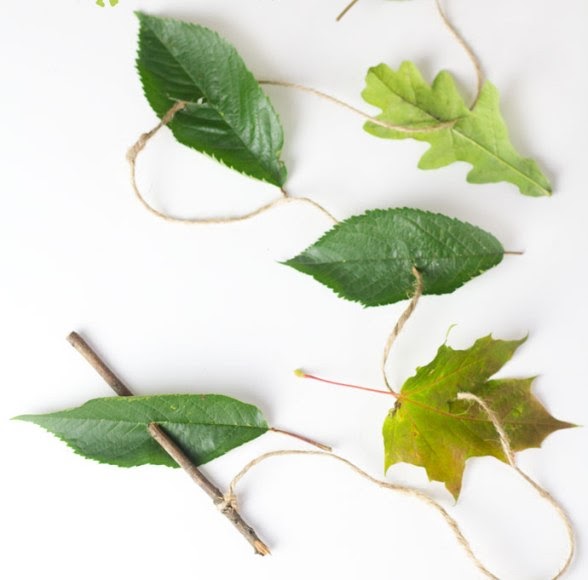
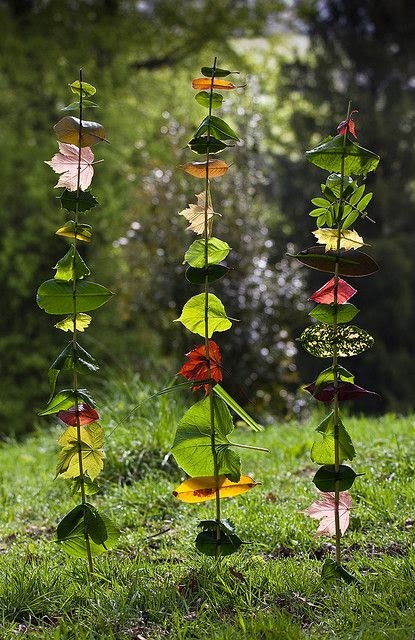
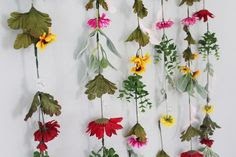
If you’ve tried threading beads with your little one, then this one is sure to be a hit! Kids Craft Room has a fun gross motor activity that involves 100% natural materials. Make a twig ‘needle’ if you don’t have a needle, tie on some twine ‘thread’ and you’re all set to thread your way through some flowers, herbs or leaves! This project has a Hungry Caterpillar feel to it, so reading the book along with this is a good idea.
***We often made mobiles from shorter strings of leaves or flowers. Or Hope hung some from a tree that her grandmother sat near. She had a hard time getting around so Hope strung all the different types of flowers from her yard. She hung them under a shady tree: that way my mom could see them all at once and they would last longer. When they started to get wilted Mom had me hang them in her room to dry.
Nature Sensory Bag
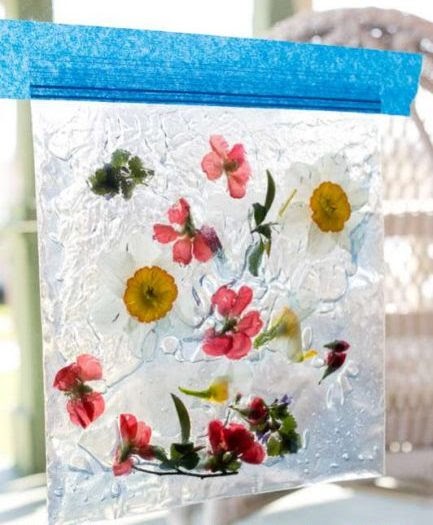
Sensory bags are a great way for babies to explore and learn to focus their attention. This sensory bag from Hands On as We Grow also doubles as a sun catcher – just stick it on the window! Gather the materials by doing a scavenger hunt or a nature walk and use double bags especially if you’re dealing with over-excited toddlers or babies! You can focus on using different textures here, so it’s more fun to squish and move around!
Botanical Sun Catchers
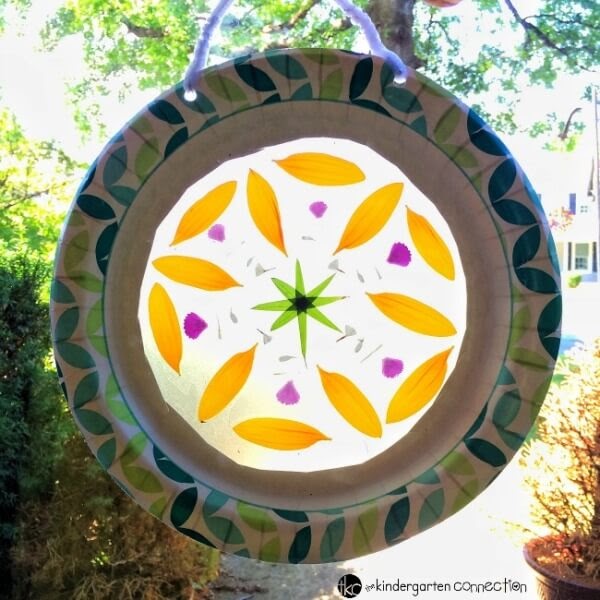
This activity from The Kindergarten Connection is more of a big-kid activity, but toddlers can do it with help from Mom or Dad. With paper plates, self adhesive transparent sheets and lots of pretty petals and leaves, you can create a beautiful sun catcher to hang by your window. What’s more, as the sun shines through the leaves, kids can clearly see the veins and other parts of the leaf and marvel at Nature’s attention to detail!
Hope's Favorite-Nature Sensory Bottle
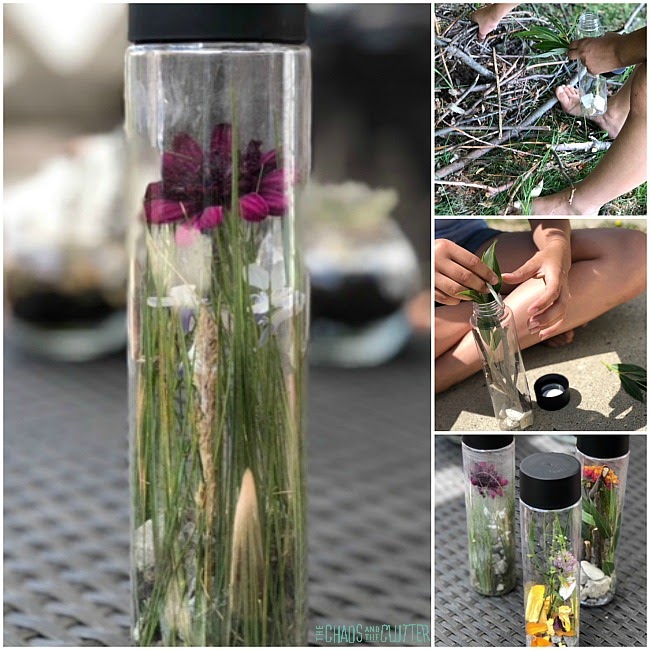
The sensory input on this activity happens throughout the activity. Each individual nature sensory bottle is unique.
Begin with a trip outside to explore nature. Bring a plastic water bottle with you. Allow your child to really take the lead on this walk or hike. NOTE: If you are using an expensive bottle- hold onto the lid. The kiddos are sure to loose it!
If they find things that catch their eye, they can add them to their sensory bottle. They can either gather all of the items before and add them to the bottle later or they can add the items as they find them.
My kids really enjoyed creating their natural sensory bottles. They enjoyed climbing through the trees looking to discover items to include. I love how each one of them came out so differently and yet all were lovely. We filled ours in the spring and the colors were so beautiful. The flowers, flower petals, and purple clover contrasting against the white rocks, green leaves and stems, and brown twigs made them quite striking.
Nature Sensory Bottle
Materials needed:
empty unbreakable bottle (I used 1 liter clear soda bottles)
items found in nature
Instructions:
Go on a nature walk or hike to gather items for your nature sensory bottle. As you are outside, ask your child questions designed to help them become more aware of their sense.
“How does that rock feel?” or for younger kids, “Does that rock feel rough or smooth?”
“What do you smell?”
“Can you feel the wind?”
“What sounds do you hear?” or for younger kids, “Can you hear the birds chirping?”
“What colors or shapes do you see?”
As they gather items to fill their bottle, have them describe the items to you. See if they can incorporate their senses into the descriptions. Really, any item they find can be added to the sensory bottle, so this list is not comprehensive.
When complete, place the lid on the bottle. Some of the items in these sensory bottles can mold over time due to moisture, so the bottles only keep for a few weeks. Or you can fill the bottle up and empty it right away and head back out on another nature hike to fill it again.
What to put in a nature sensory bottle:
sticks
rocks
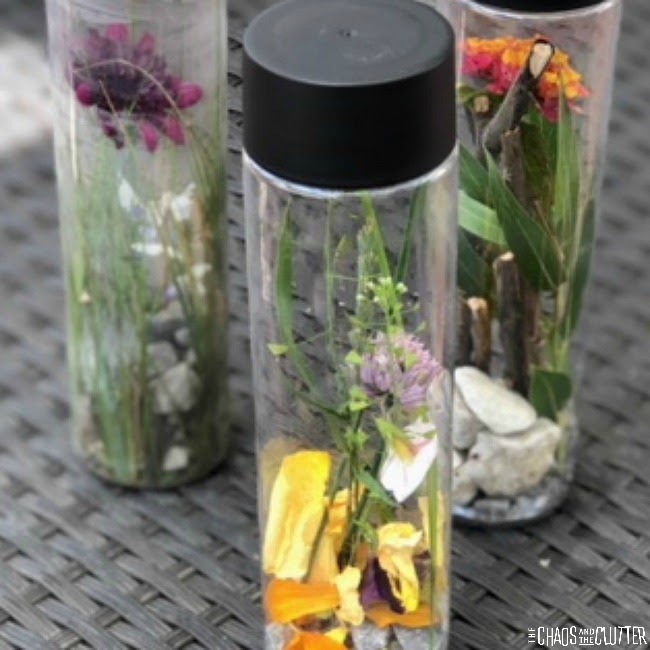
pussy willows
leaves
snow
water
flowers
flower petals
weeds
pebbles
seeds
dirt
mud
sea shells
pine cones
pine needles
feathers
herbs
grass
acorns
sand
berries
insects (only if you poke holes in the bottle of course)
wheat
You can do this sensory activity in any season. Encourage interest in the different colors and textures as the opportunity arises. The nice thing about that is that the natural sensory bottle you make in winter will be very different from the one you make in spring. My favorite season is fall because of the colors of the leaves. They make beautiful sensory bottles!
Nature Portraits
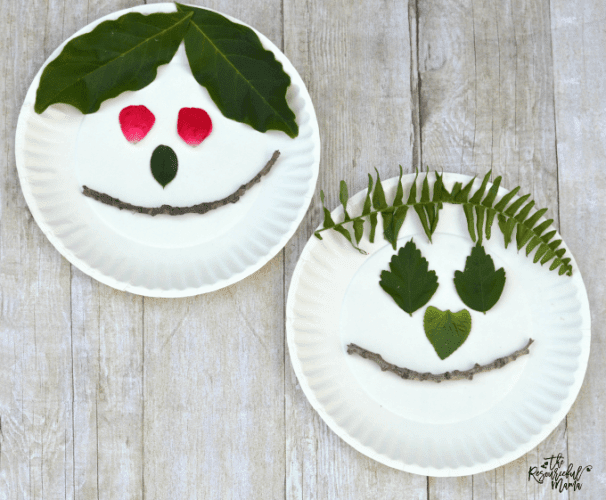
Does your toddler like making faces? Well, then this activity from the Resourceful Mama is perfect for her! With paper plates and lots of leaves, flowers, berries and more, you and your toddler can make some hilarious looking faces! Gather twine or long grass for hair and go crazy with some weird hair styles! Just hand the materials to your little one and let her create a face to her liking.
Nature Collage
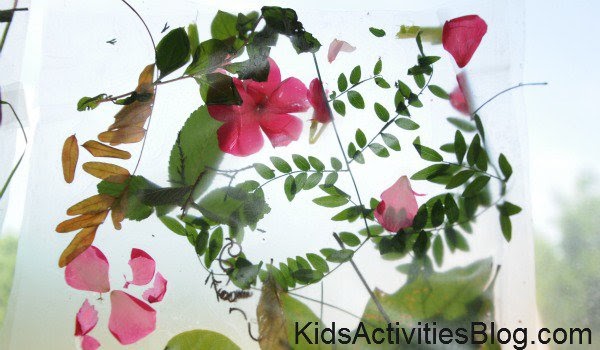
Collages are among the easiest craft projects for toddlers and preschoolers, and this one from Kids Activities Blog is no different! However, what’s special here is that you use only natural elements to make the collage! They have used contact paper to make the collage do double duty as a sun catcher, but you can just use a sheet of thick paper or card stock as well. Use fresh flowers or dried ones – they’ll all look pretty!
Turn a Family Scavenger Hunt into a Nature Mobile Fall Craft for Kids
Today we have a fun nature mobile fall craft for kids that doubles as a great way to get your family active. Strap on your hiking shoes and get ready to forage through the wilds to get the supplies for this easy craft! Winter is on its way, my friends. There is no denying it. The temperatures are dipping and some of us have to turn on our heat at night! Soak up the last of the warm remnants of summer and spend some time outdoors before the icy temps hit. While you’re out there, keep an eye out for some great supplies in nature for this craft!
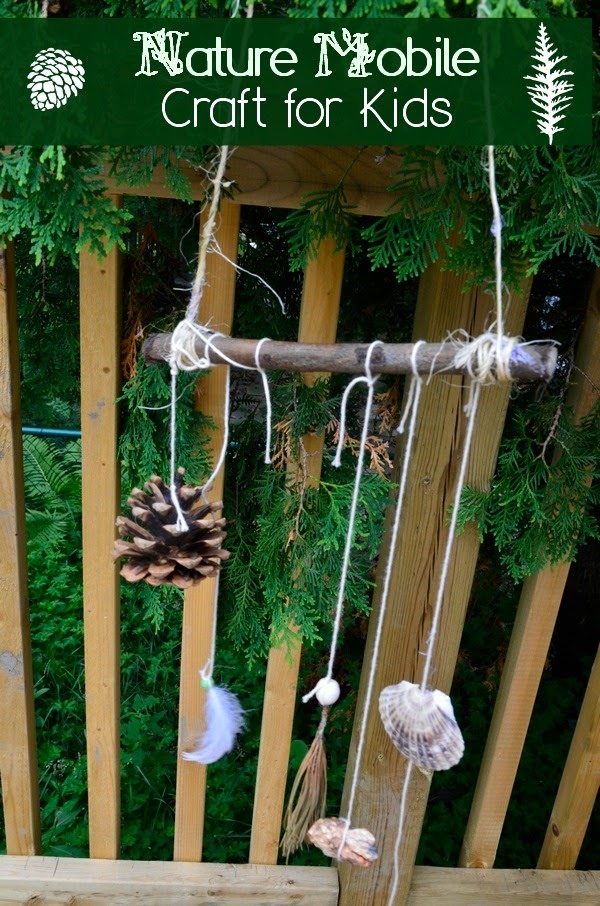
WHAT YOU’LL NEED:
Pinecones, seashells, feathers, cool rocks and any other natural elements that you find on your journey.
Twine or other natural-looking rope
Beads, if desired, preferably in browns, greens and other forest colors.
A thick stick or twig
SUPPLIES FOR CITY DWELLERS
Live in the city and can’t get to nature? We don’t want to leave you out! You can find most of the supplies at a craft store. Take a look at our suggestions.
HOW TO MAKE IT:
Start by gathering your supplies for this fall craft for kids. This is the really fun part! If you live in a woodsy area, you could find everything you need in your own front yard. For the seashells, dig into your family memory box from past trips to the shore. Don’t have seashells? No big deal, you can really use any natural elements here. The key is to make it meaningful to your family.
Lay everything out in front of you so you can see what you have. Take the thick twig and place it at the top of your surface. Arrange your other elements until you have everything where you want it.
Cut your twine in varying lengths, enough pieces for each item.
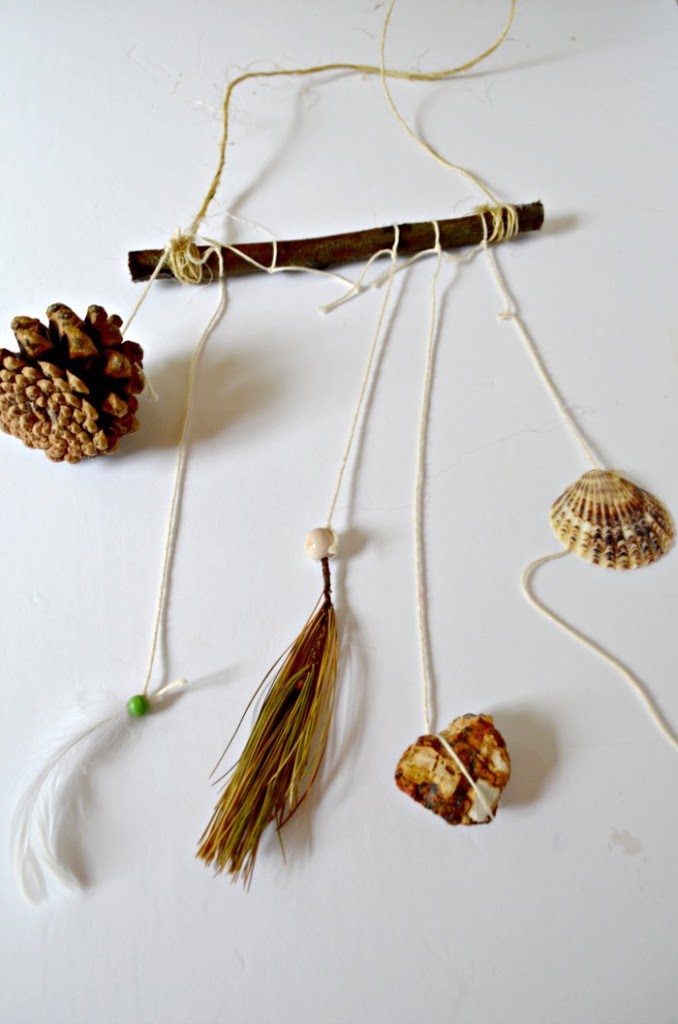
4. Use the twine- and beads, if desired- to attach each piece to the thick stick.
5. Create a hanger by tying the twine to each ends of the stick, with enough give in the middle to let it dangle from your hook.
6. Hang your nature mobile someplace where everyone can admire it!
That’s it! Easy, right? You could take this nature mobile fall craft for kids in so many different directions. Make one each season and bring it out to celebrate the change in weather. Make it a new tradition: when you go on vacation, search for items for another mobile. The great thing about this fall craft for kids is that it has the potential to bring the entire family together.
DIY Pressed Nature Suncatcher Craft for Kids
This activity was inspired by our DIY Nature Slides for the light table. It uses simple materials and not only teaches kids about the environment in their area but it’s also a fun activity to work on fine motor skills.

Materials:
Flowers/leaves from your yard or local park
Laminator
Laminating pouches
String
Scissors
Hole punch
Tape or suction cups
Start this activity outside by collecting flowers and leaves from your yard or local park. My daughter calls this part a “nature adventure” as we take magnifying glasses and bag for our finds with us and walk around the neighborhood. It’s a great way to begin discussions about local plant life and the life cycle of plants.
Once we collected a few different types of flowers and leaves we took them home and laminated them.
For this activity, we just laid the flowers on the laminating pouches and ra, cut off the excess stems, and sent them through the laminator. If you have more time I’d recommend pressing the flowers first but my daughter didn’t want to wait a week or two to see her nature suncatchers so we just did them as is.
Wax Paper Pressing Method
One of the most common ways to preserve leaves is by pressing them between wax paper.
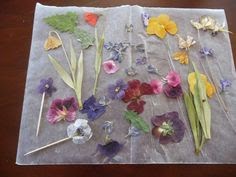
What You Need:
Leaves
Wax paper
Thin towel or paper
Iron
Ironing board
What You Do:
Place some leaves or flowers or between two pieces of wax paper.
Put a towel or a piece of thick paper over the wax paper.
Press on the towel or paper with a warm iron to seal the wax sheets together. This takes about 2-5 minutes on each side, depending on how moist the leaf is. Once you have finished one side, flip the leaf over and do the other side.
Cut around the leaf, leaving a small margin of wax paper to ensure that it will stay sealed.
Rather than cutting out the leaves, you may want to try to peel the wax paper off the leaves, leaving a coat of wax behind to protect the leaves. Try this on one leaf first to see if this method works for you.
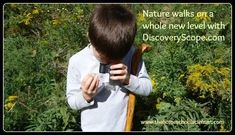
Observing Nature With The Discovery Scope
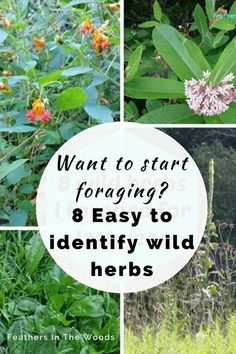
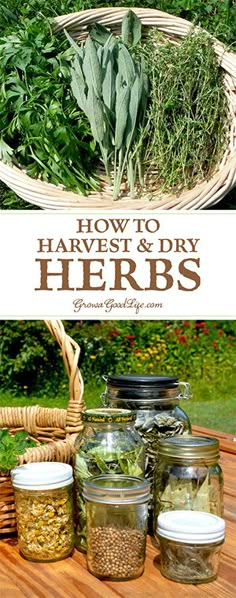
How to Harvest and Dry Herbs for Storage
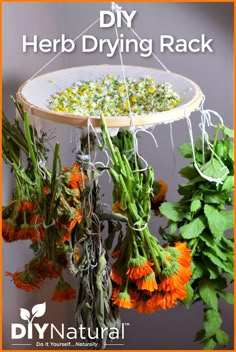
A Tutorial For A Simple DIY Herb or Floral Drying Rack

Freezing Herbs For Later Use – 5 Ways
Freezing herbs allows you to store your fresh herbs longer,

How to Prep and Preserve Woodland Nature Supplies for Play and Crafts
Learn how to easily prepare and preserve fall nature supplies like acorns, pinecones, and sticks for long-term indoor nature play, classroom study, and kids crafting. ... more
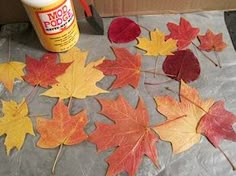
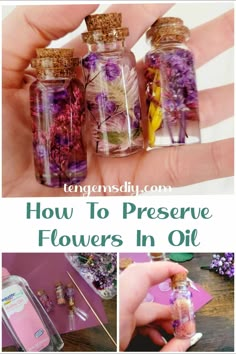
How to preserve flowers in oil
I love shadow boxes so here is one that I love.
We have been collecting shoe box lids for a variety of activities and this one came straight from the wonderful artistic ideas shared by Casa Maria’s Creative Learning Zone….
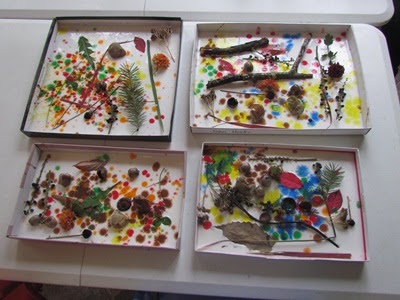
Prepare the Shadow Box
To make these beautiful shadow boxes, the children started by pouring glue into shoebox lids. I wasn’t sure how much Mod-Podge would be needed so I had them at least fill the lid with enough glue that the nature items could lay firmly in the Mod-podge…
Collect Items in Nature
Next, the children went outside to collect nature items to put in their mod-podge. I had the children go back and forth to collect something and instructed them to look for something different each time so they would have a variety of items to put in the glue…
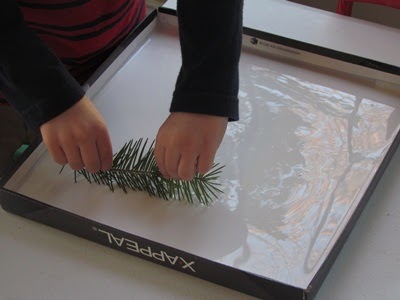
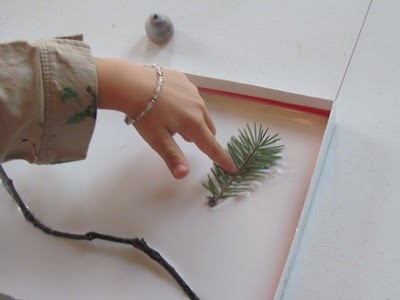
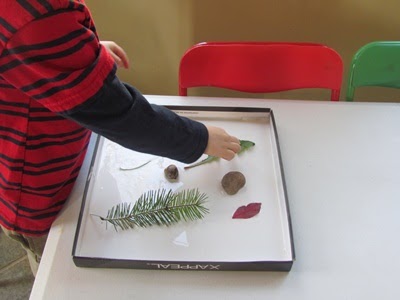

The children found leaves, sticks, pine needles, acorns, flowers, rocks, and a few other nature items to add to their boxes…
I encouraged the children to be very selective as they searched for items to add to their shadow boxes. For past activities, the children would grab a handful of random leaves and give little thought as to the beauty or different qualities of each item they bring in. So this time, I wanted to slow them down and have them be more thoughtful in what they selected to add to their boxes…
Design the Shadow Box
Some of the children were very selective as to where they set their nature items in the box. That would be my Hopey, wanting color balance and symmetry. Other children just placed them anywhere in the box…
Add a Colorful Effect
Once the children added a nice supply of nature items to their box lids, then we began to add some color. I debated about leaving the glue just white because I felt like they were beautiful as they were but the children loved this next step so I am glad we continued on….
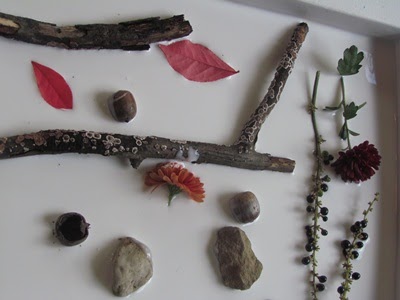
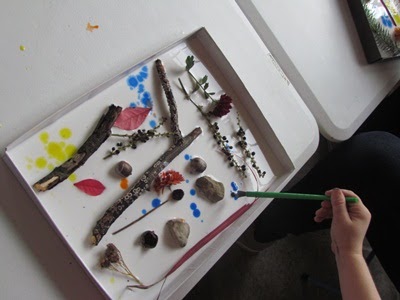
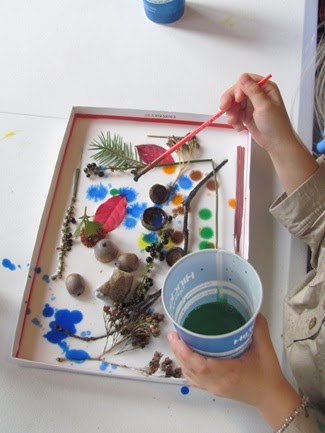
For our next step, I set out cups of slightly watered down tempera paint and some paint brushes. The children used the brushes to gently sprinkle different colors of paint on the glue (or white spaces between their nature items)…
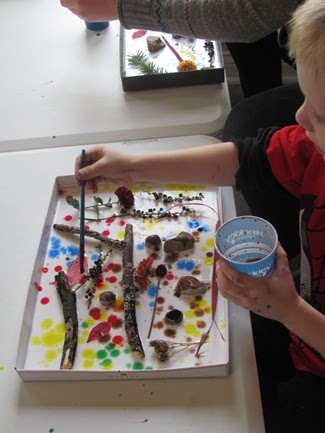
Enjoy the Creative Process
The children concentrated on adding color. The room was so quiet as the children focused on the process for about 10 whole minutes which is unusual in my classroom…
Once each child was satisfied with the paint dripping part of this process, then I set the shadow boxes up to dry for a few days….
Embrace the Unique Creations
The shadow boxes have been drying for over a week so far.. Ours are still not quite dry but as they dry, the glue starts to turn clear. I hung these up for a quick photo and had to take them back down because the glue was dripping. The shadow box all the way to the left is almost completely dry – as you can see the glue has started to turn clear in color. I am interested to see the final results of their unique creations and the nature items should really stand out…
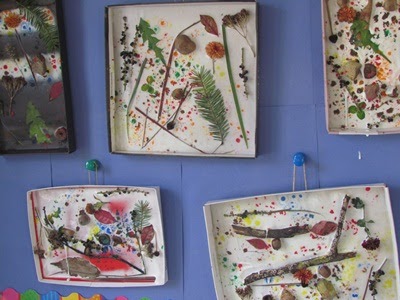
Hope really liked the effect of spraying water with a spray bottle over the whole shadow box -allowing the watercolor to spread out under and around her treasures.
My kids are always collecting nature on our walks. I love to use their nature treasures for crafts. How about making:
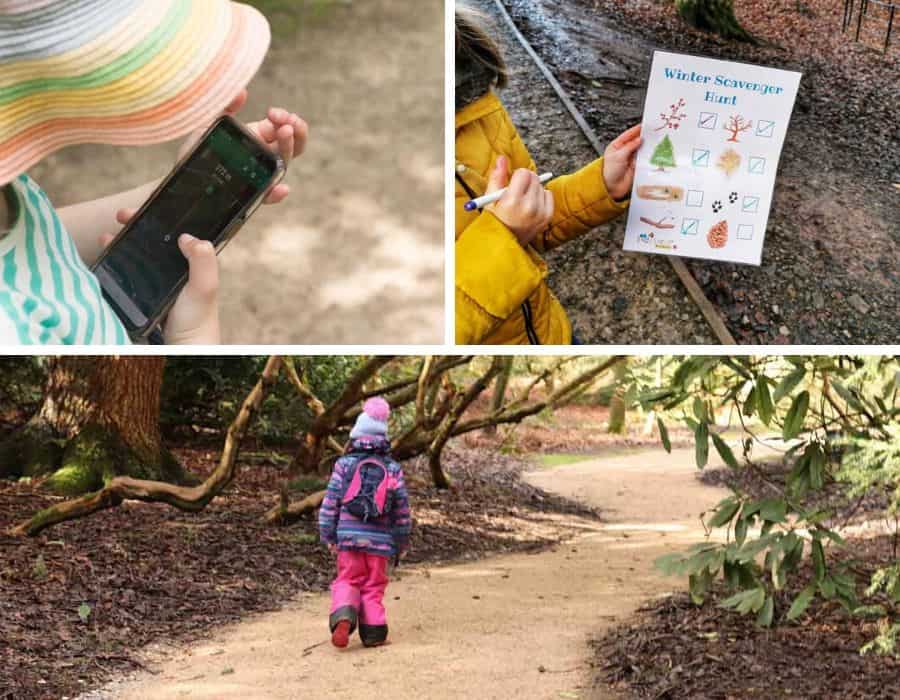
Why not collect nature on your next walk and create some nature art.
Sticks are one of the best craft materials in nature. Find 30 fun things to do with sticks here.
If you want more ideas then you’ll love my post of fun forest school activities.
Outdoor activities for toddlers
I’m a big believer in getting kids outside from an early age. Toddlers will love being outside.
But if you are wondering what to do with them though? Here are 33 outdoor activities for toddlers.
Thinking of going camping with toddlers? Do it but read my top tips first for my top tips for camping with toddlers. Find the best camping toys for kids over here.
Go on an after-dark lantern walk. Here’s a DIY paper lantern craft for toddler
Incredible Outdoor Play Activities
Creating Incredible Outdoor Play
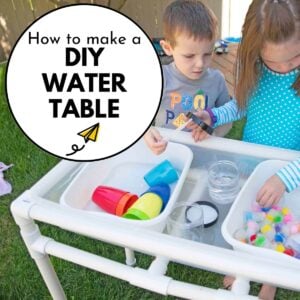
How to Make a DIY Water Table
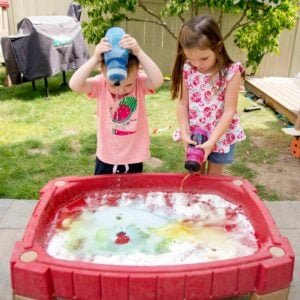
How to Make a Science Table

How to Make an Outdoor Easel
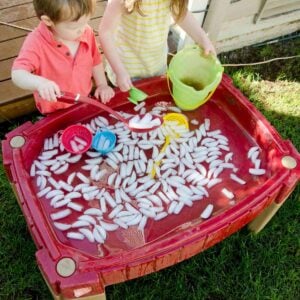
Ice Table Sensory Bin
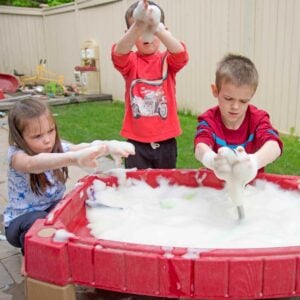
Bubble Foam Water Table

How to Make an Outdoor Easel
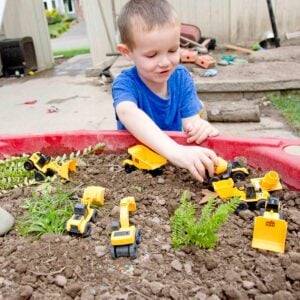
Construction Site Small World
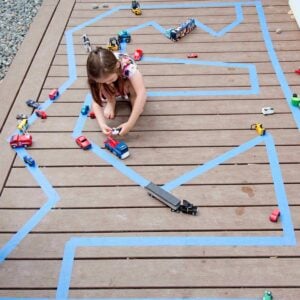
Outdoor Road Easy Activity

Giant Painting Outdoor Art Project
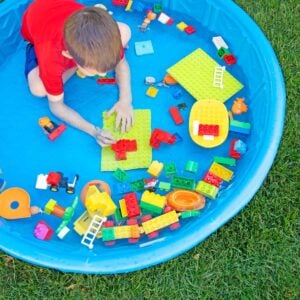
LEGO Pool Outdoor Activity

Outdoor Potions Science Activity
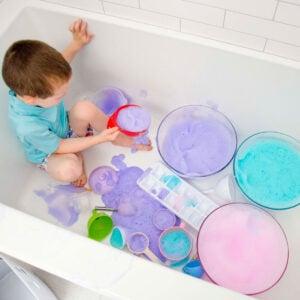
Bubble Foam Bath Activity

Bubble Foam Water Table
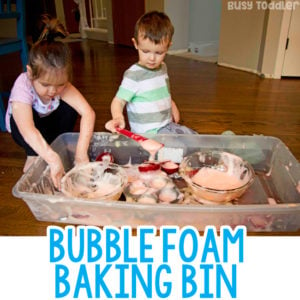
Bubble Foam Baking Bin
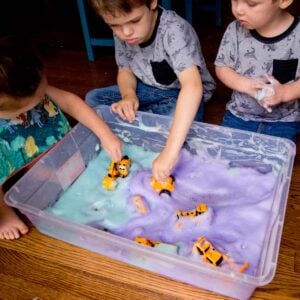
Bubble Foam Trucks Activity
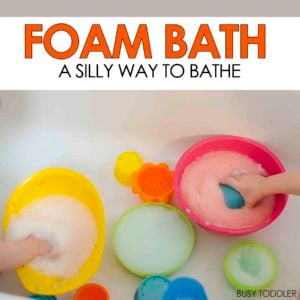
Foam Bath
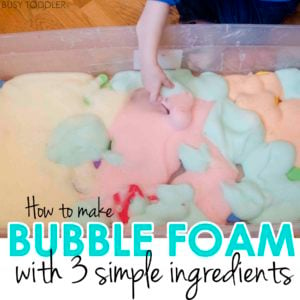
Bubble Foam Sensory Activity
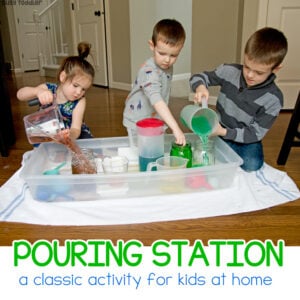
Rainbow Pouring Station Kids Activity
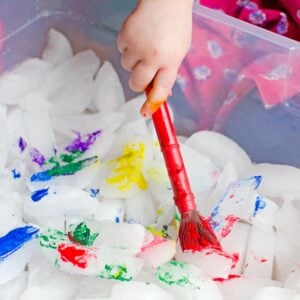
Painting Ice Cubes Activity
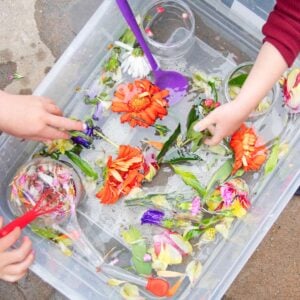
Flower Soup Outdoor Sensory Bin
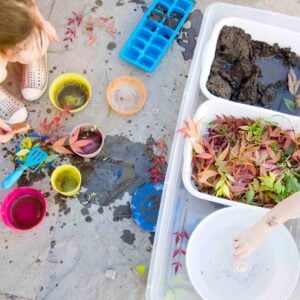
DIY Mud Kitchen for Kids
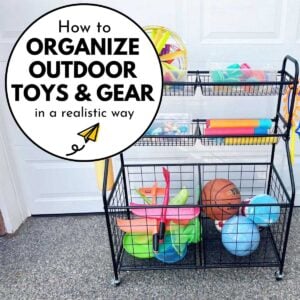
Outdoor Toy Storage Ideas
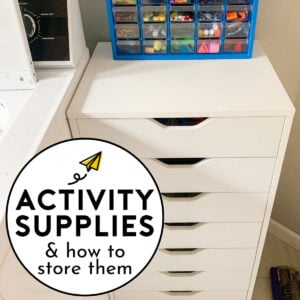
Supplies
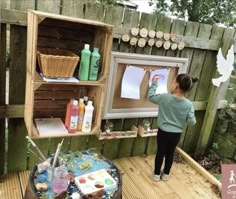
Outdoor art space
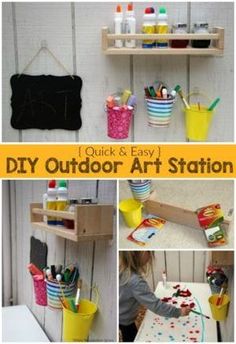
Outdoor Creative Art Station for Kids
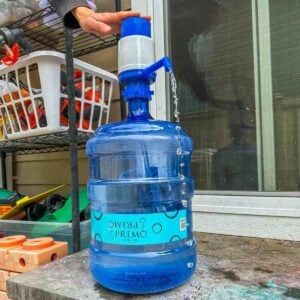
DIY Water Pump for Kids
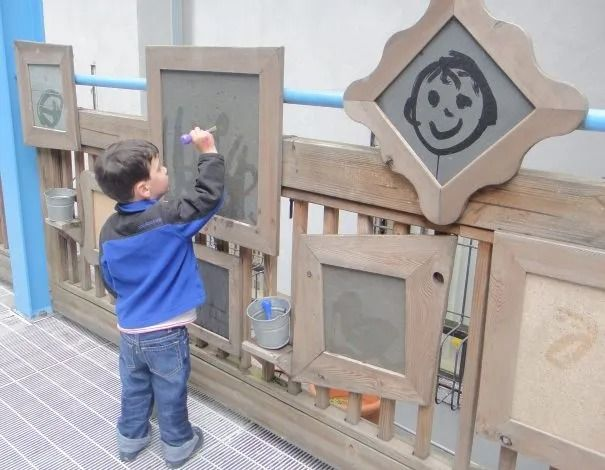
Incredible Outdoor Art Spaces
You Can Set Up Today
When it comes to innovation, parents can get pretty crafty with just a handful of items. Case in point: these killer outdoor art studios, set up by parents for their creative geniuses. Scroll down to see the ideas and get inspired to make one yourself.
Picnic Art Studio
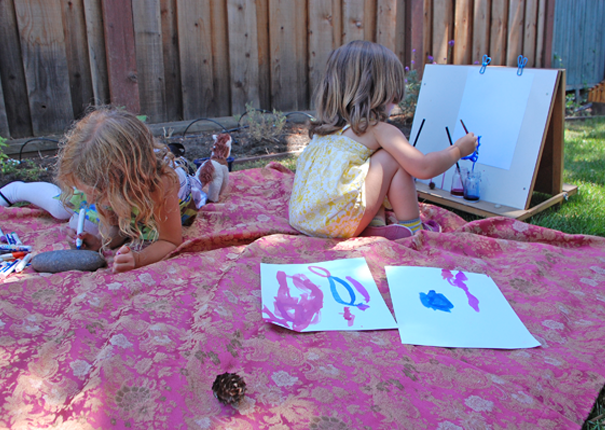
You never know when inspiration will strike, especially when you're out exploring nature. Tinkerlab set up an impromptu art studio using just a picnic blanket and a few select supplies. Find tips for setting up a garden studio here.
Mounted Outdoor Easel

Give the kids a constant place to be artistic outside, rain or shine. Craft a mounted outdoor easel like this one from Made with Happy and let the creative juices flow!
Art Station
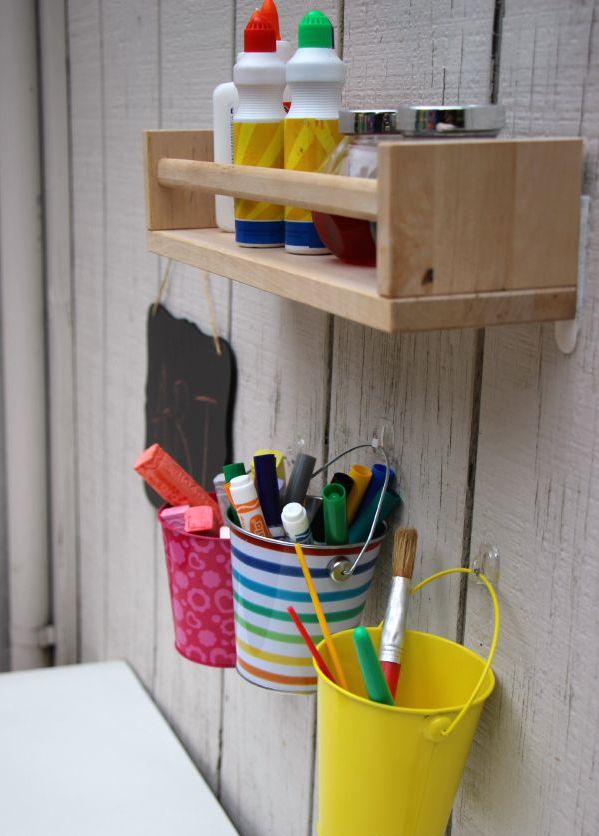
Where Imagination Grows proves it's easy to create a colorful outdoor art space without breaking the bank. A simple wooden shelf and metal buckets in an assortment of bright hues and patterns house the supplies, and an upcycled coffee table is the perfect height for young artists. Check out the rest of this outdoor craft corner and find a list of materials you'll need to create your own here.
Use the Windows or Sliding Glass Door as a Creative Space
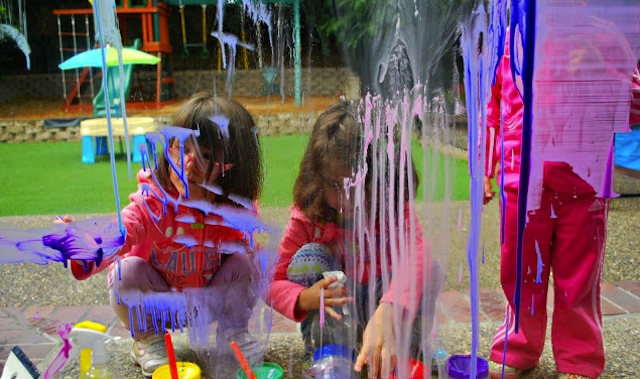
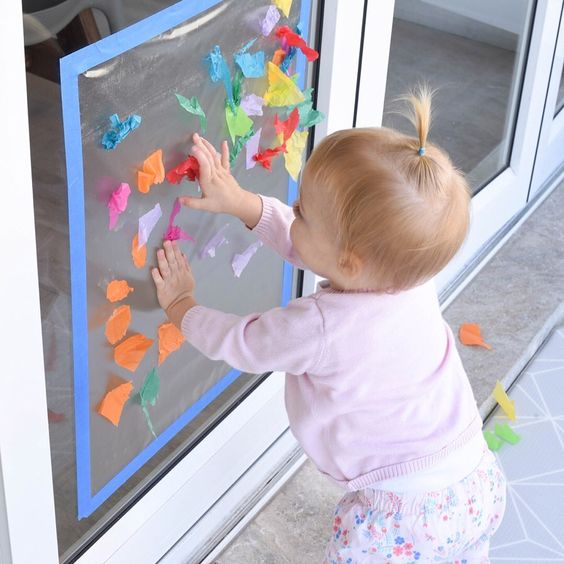
Washing windows just got a lot more creative. Give your kids brushes and spray bottles, and watch them paint, clear, and paint again. Head to Mess for Less for ideas on how to get the paint/water mixture just right.
Recycled Box Art Studio
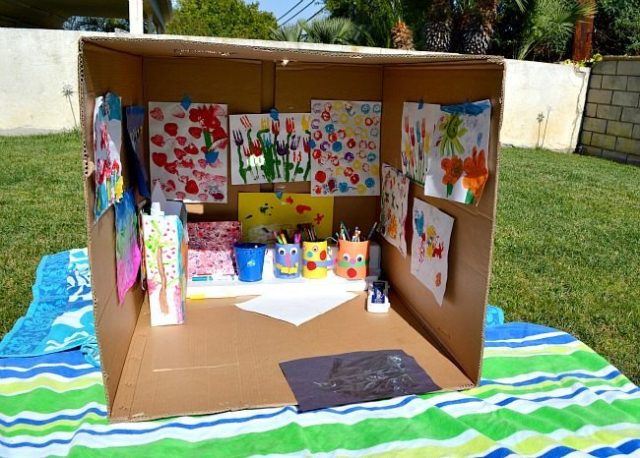
An ordinary cardboard box easily transforms into an extraordinary art studio by adding a few supplies and your artist's latest creations. Head over toKids Play Box to see how to make your own portable gallery.
DIY Chalkboard
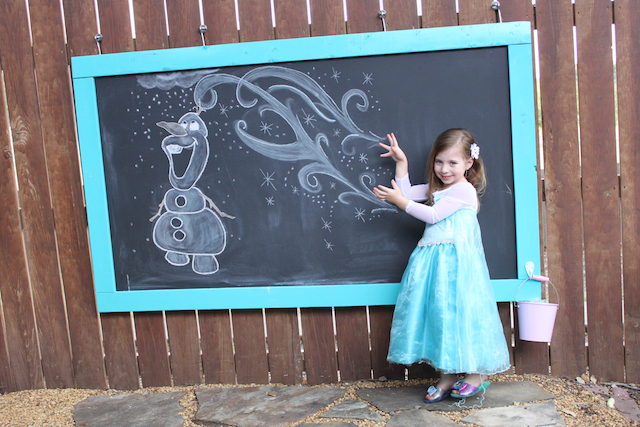
Color, erase, repeat. An oversized chalkboard makes a great reusable canvas, and doubles as a scoreboard for afternoon games. Head over to Dallas Moms Blog to find out how to personalize and hang one in your backyard.
Design Your Own Outdoor/ Indoor Fort
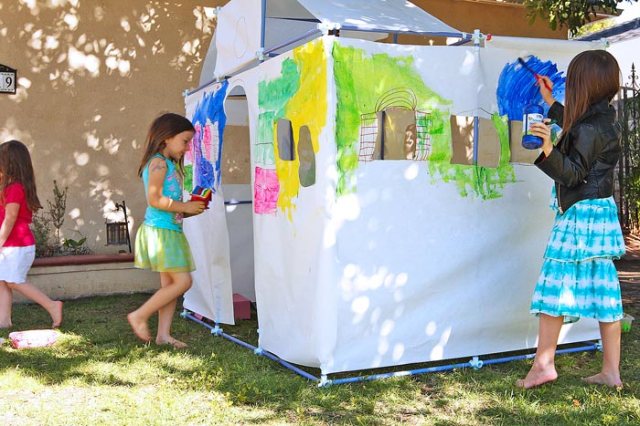
A step up from a cardboard box, this outdoor fort is an art project in itself. Babble Dabble Doused a kit to create the frame for this awesome playhouse, draped it with butcher paper and let aspiring designers go to work personalizing the space inside and out. Head over to their blog to find materials and sources.
Cardboard Easel
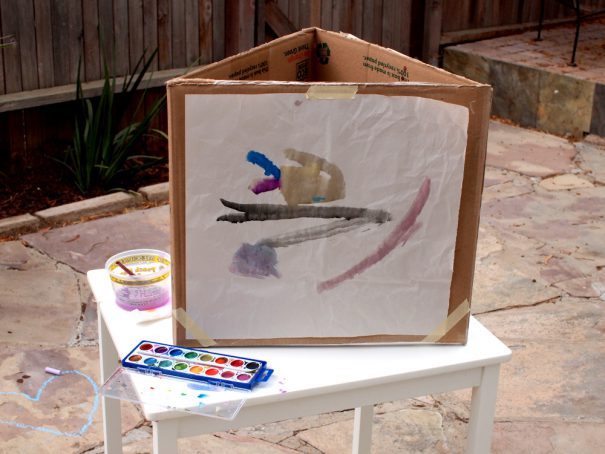
This awesome DIY easel from Pink Stripey Socks is super easy and inexpensive to make with very few materials. Plus, it can accommodate up to three artists at once! Grab a cardboard box and check out the blog to learn to make your own.
Patio Studio
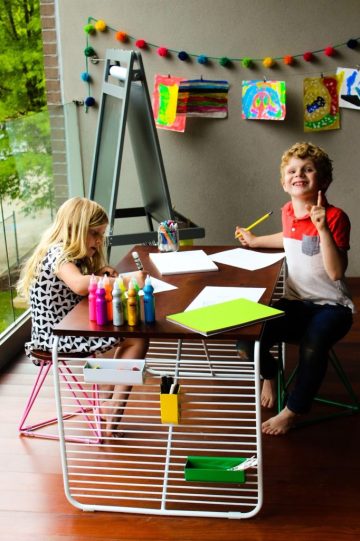
Even if space is at a premium, it's still possible to set up an outdoor creative space for your little artist. Not-So-SAHMdesigned this craft room on the balcony of her home. Head over to Honest to Nodfor a closer look at the space.
Upcycled Water Table
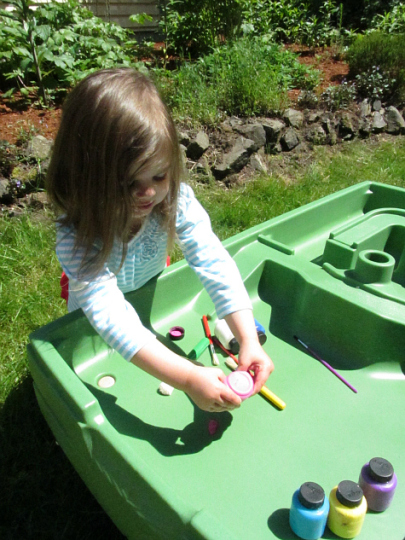
No Time for Flash Cardstook finger painting to a whole new level by using her daughter's water table as sensory tub painting project. Find all the materials you'll need to create your own colorful canvases here.
DIY Plexiglass Easel
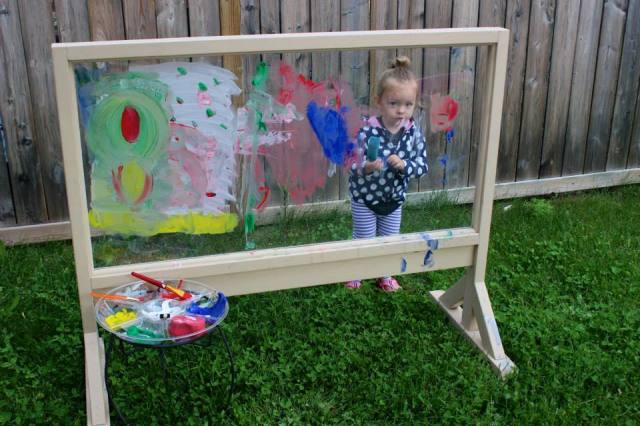
Thinking beyond dry erase and chalkboards, All the Little Lightscrafted her daughter's easel out of plexiglass. The attached paint palette is made from a plastic vegetable tray, great for separating paint colors. Easy to wash and reuse, it's the perfect outdoor canvas for artists of all ages.
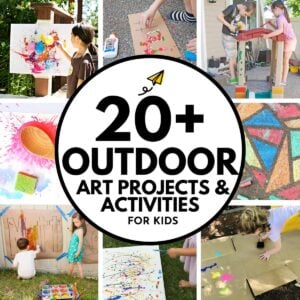
Outdoor Art Activities for Kids
15 Kiddie Pool Activities for Summer
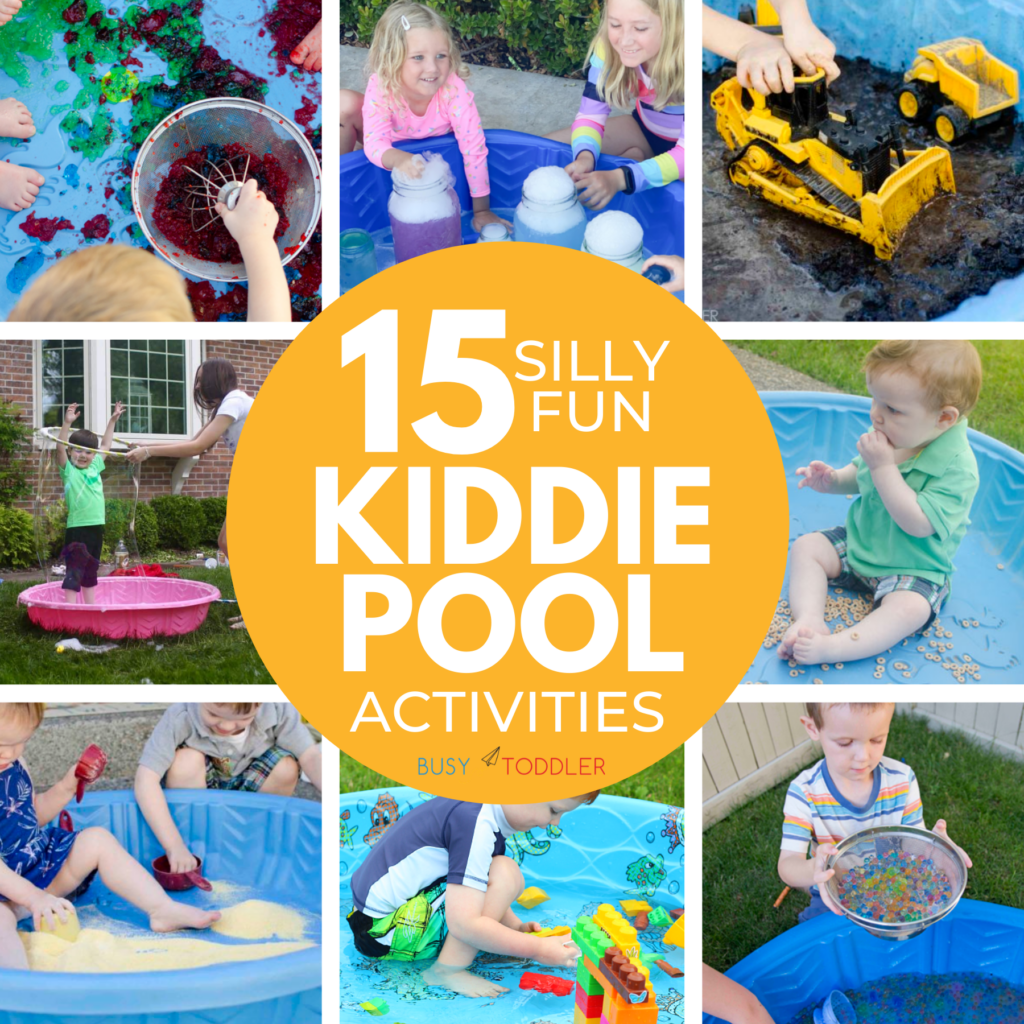
Table of Contents:
It’s so much more than swimming in these kiddie pool activities…
Let’s get some kiddie pool activities rolling this summer!
I do more activities in my pool than swimming…
It’s so much more than swimming in these kiddie pool activities…
Favorite game I like to play each summer: How many times can we NOT fill our kiddie pool with water? Because there’s a million things you can do in a kiddie pool (no water needed…)
RELATED: Looking for fun outdoor toys?! I’ve found the best list!
Let’s get some kiddie pool activities rolling this summer!
It’s kiddie pool season and those plastic bins are the absolute best for summertime kids activities.
For under $10, you’ve got a full body sensory bin – an easy to clean container – the perfect spot to set up (and hose out) outdoor activities.
Friends: GO GET A KIDDIE POOL.
I do more activities in my pool than swimming…
Throughout the summer, my kiddie pool will act as a sand box, dirt box, sensory bin, holding pen, and even a baby play area.
Kiddie pools serve more functions than you can imagine… but don’t limit them to the summer!
At the bottom of my list, I added a few of my favorite INDOOR kiddie pool activities because these pools are still amazing even in the winter.
The 5 reasons I love a kiddie pool:
They’re big (kids can get in on the action)
They hold lots of play (go big or go home!)
They’re easy to clean out (grab the hose!)
They’re versatile (this isn’t going to break!)
The sides are high (this keeps messes and kids contained).
Enjoy these 15 kiddie pool activities!!! I’ll keep adding more as I come up with them or see them on other blogs.

2. Secret Magic Dry Ice Science
4. Summer STEM Activities: Blocks in A Kiddie Pool
7. Giant Water Bead Sensory Bin
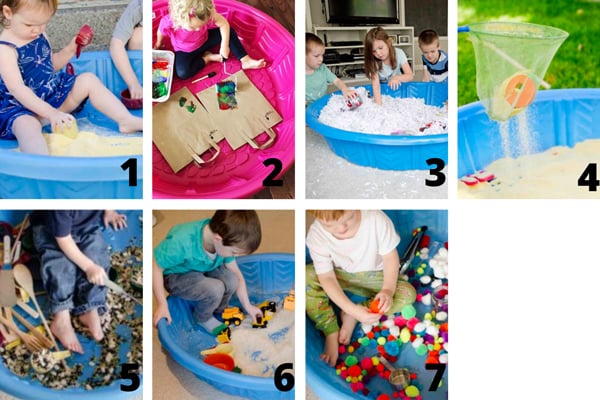
5. Bean Pool
6. Rice Pool
7. Pom Pom Pool
Have the best summer (and winter too!) with your kiddie pool! Don’t over look them – they’re a little bit of summer magic.
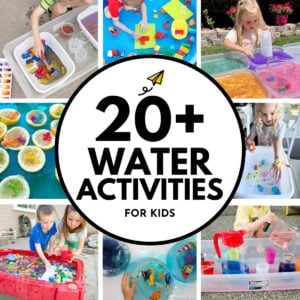
Water Activities for Kids
Water Stations for Kids
Looking for the best water activities for kids? This list of 20+ water and ice ideas for outdoor play is what you need: a curated set of tried-and-true activities. On this list, you’ll find a variety of sensory, science, art, and game-based water activities to hold kid attention on outdoor days.
What are the best water activities for kids?
Water activities are fantastic for outdoor play. They’re largely accessible, typically low in cost, and kids gravitate to them.
My mom raised me with a few nuggets of child-rearing wisdom, and one was, “When in doubt, just add water.”
That’s saved many a long morning or skipped nap time days in my life because whenever I’m at a loss for what to do with the kids, how to hold their attention, or ways to reset a bad mood day, I reach for a water activity.
RELATED: Looking for other outdoor activities for kids? Try this list of 50+ ideas that kids will love.
Using water and ice stations outside
Along with water activities, ice activities come into play too. For the purpose of this post, we will lump water and ice activities into one giant category.
Ice play, especially as a summer activity, is the perfect way to bring life to backyard fun and hook attention.
Yes, many of the ice activities on this list do need a little bit of prep (time for the water to freeze), but it’s well worth it for the epic play pay off.
What ages are these water activities for?
One of the best things about water activities for kids: they’re “taste safe” and (largely) can be done with a wide variety of kids.
These activities typically can be done in a multi-age setting where we can focus more on child interest than on a child’s numerical age. This “stages not ages” when considering an activity for a child as needs and likes vary.
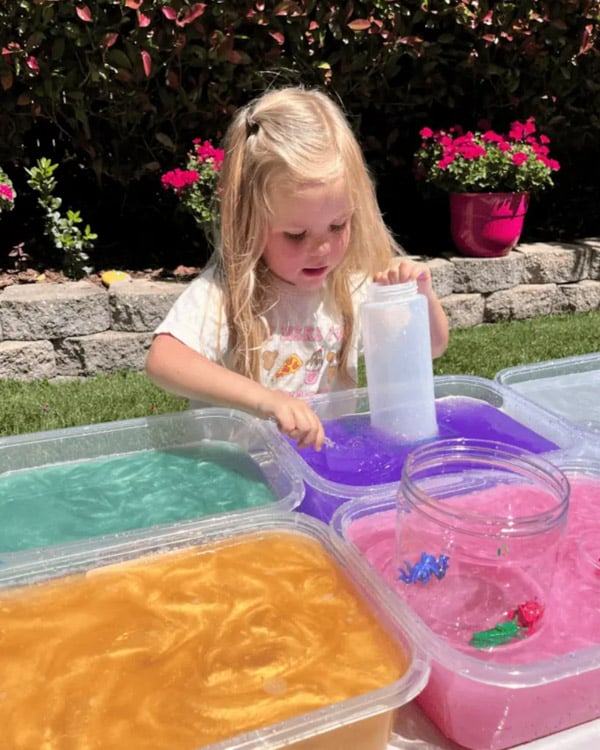
Metallic Water Table
There is NOTHING cooler than dyeing water with metallic paint. It swirls, it moves, it’s inviting like you won’t believe.

Water Balloon Pinata
What a fantastic twist on water balloons! Can you just imagine how much fun this would be at an outdoor party?
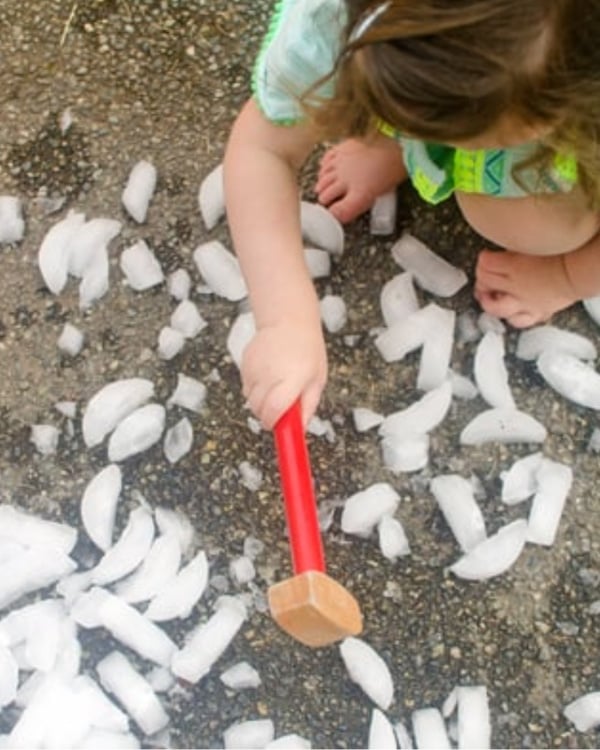
Ice Smash
Grab some eye protection and some mini hammer – then let kids smash the ice. There’s so much left over ice from summer parties and camping. Save it and try this!
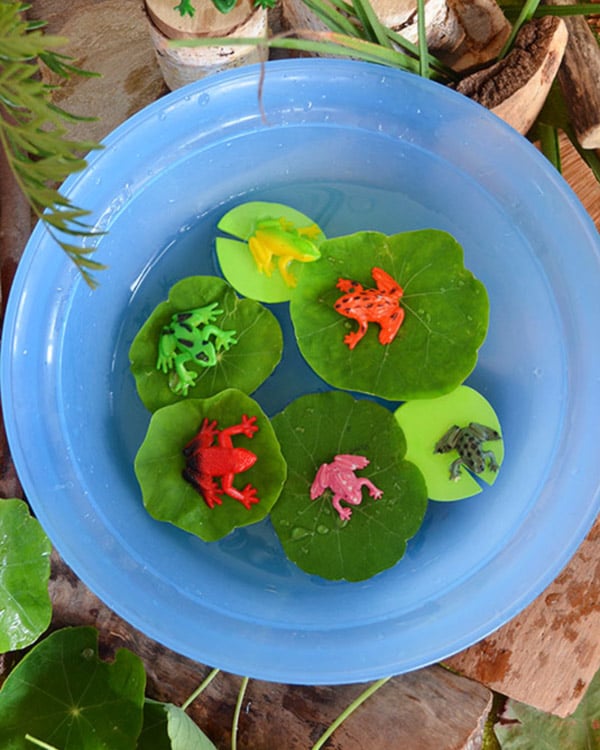
Frog Pond Small World
A great and easy way to practice some imaginative play while also not risking it getting too out of control and messy. This is such a sweet, simple activity.
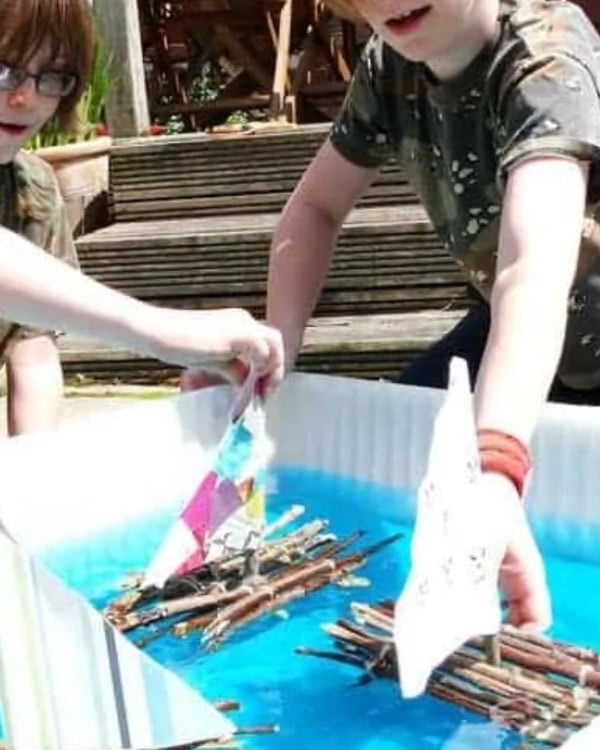
Stick Raft Building
Put that collection of sticks your kids have been saving to use and help them to create these amazing rafts! You’ll love seeing what they come up with.

Paper Boats
These boats really float! It’s such a great idea, easy to do and fun to play with in a kiddie pool or if you are feeling really adventurous, take them to a little creek in your area and watch them go.
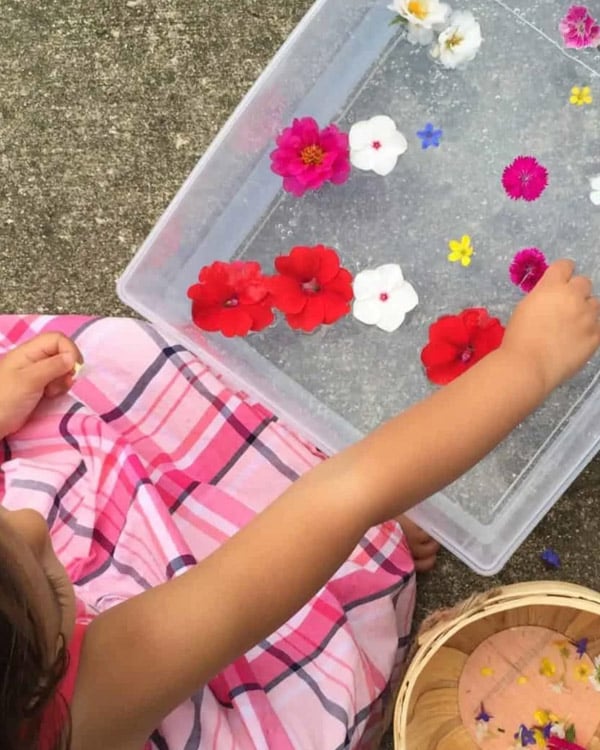
Flower Sensory Bin
Creating sensory bins with flowers is one of my favorite summer activities. Water, flowers, and a bin to play in is all you need.
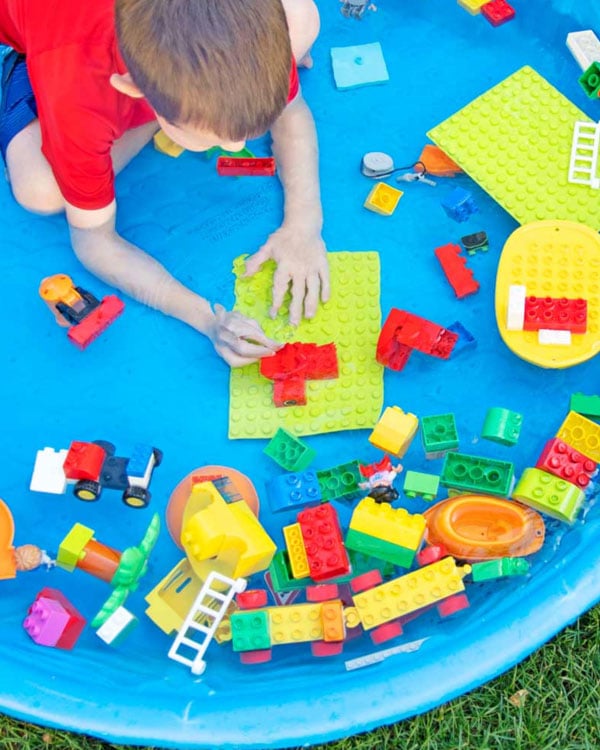
LEGO Pool
Put LEGO bricks in the kiddie pool! Trust me – it’ll bring life back to your pool and to a beloved toy
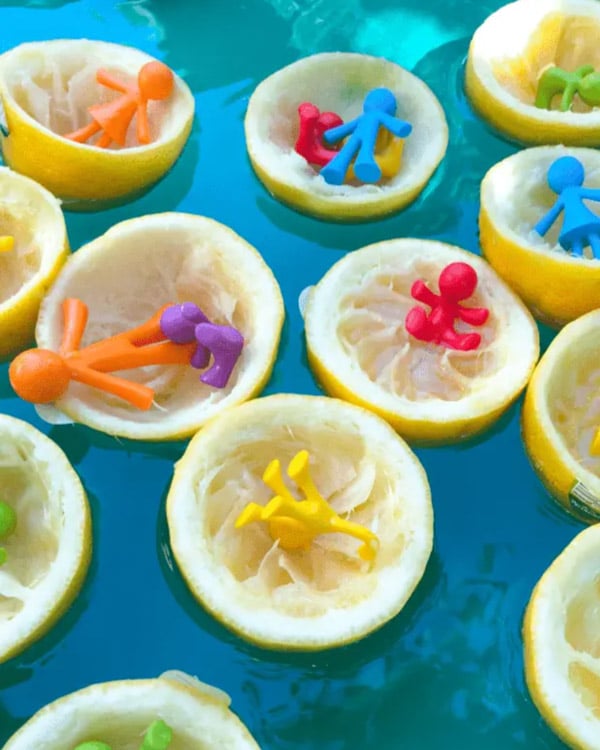
Lemon Boats
Don’t toss your lemons! Save old, half used, all used lemons for a one of a kind sensory bin. It’s unexpected – and kids love that.
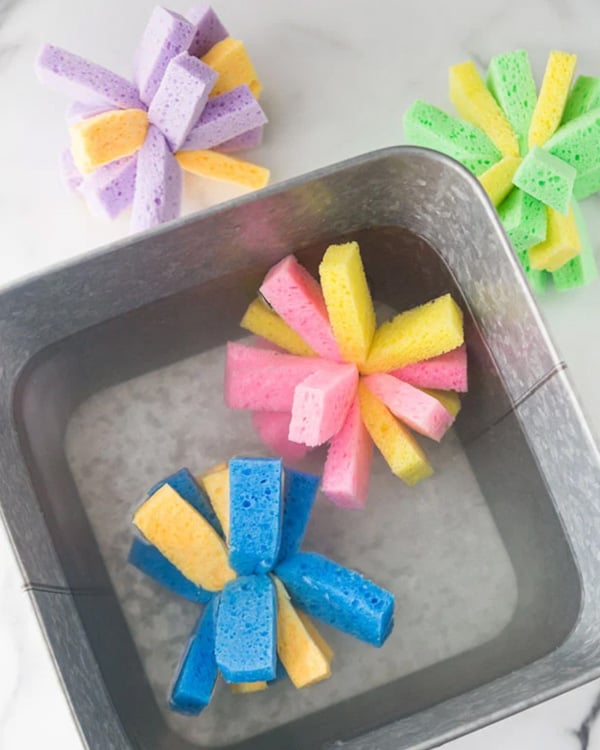
Sponge Water Bombs
Oh, this is perfect for all ages this summer! Grab some dollar store sponges and you are good to go.
View at The Best Ideas for Kids
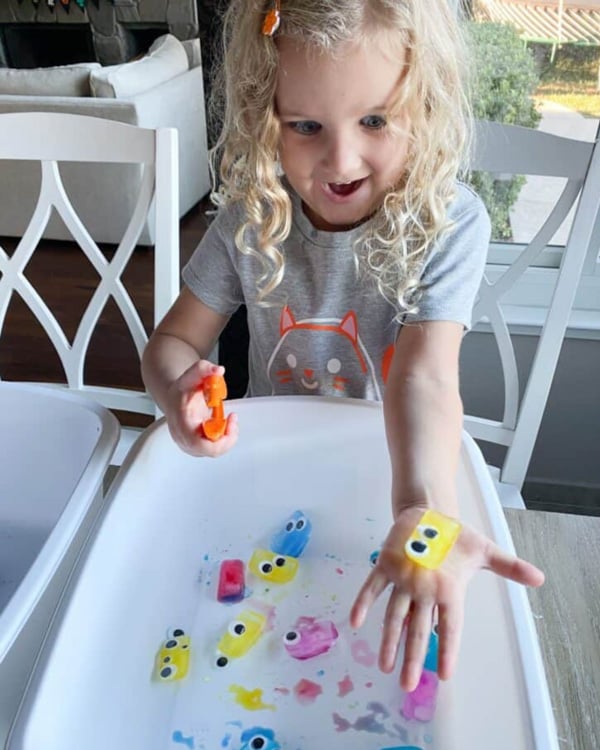
Monster Ice
This takes a second to prep ahead of time and it’s worth it: make some monster ice on a day when everything is going well for your family. The next time things aren’t going as well, that’s when you’ll bust out monster ice and save the day.
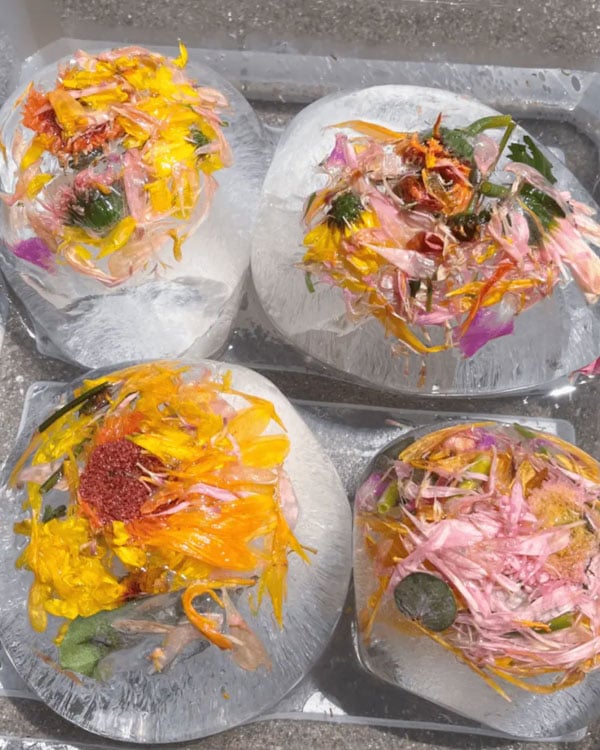
Frozen Flower Cubes
We love using old flowers in a sensory bin, so freezing them just makes sense. This is a terrific science and sensory moment for kids to have.
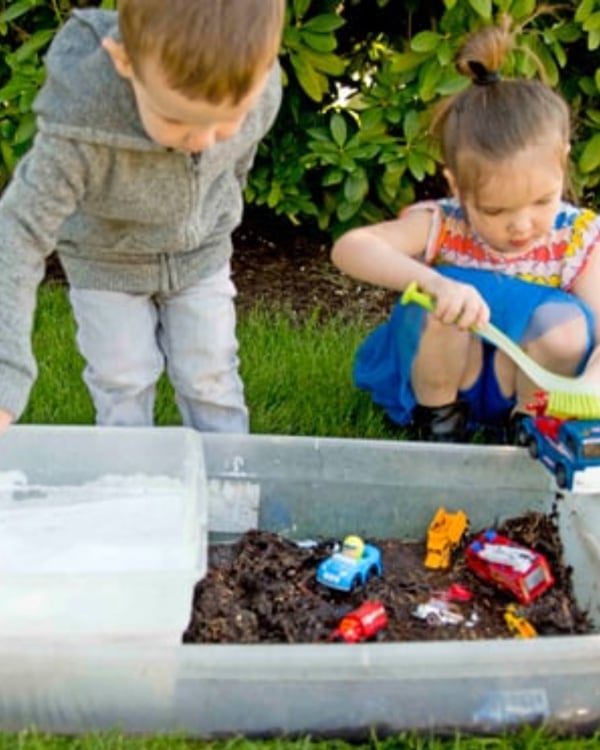
Clean the Cars
Giving kids a goal is a great way to hook them into an activity. Letting them “clean the cars” in this mud filled sensory bin is a win.
Painting with Water
A great way for little ones to “paint” but actually avoid the mess that can sometimes come when little hands and paint come together.
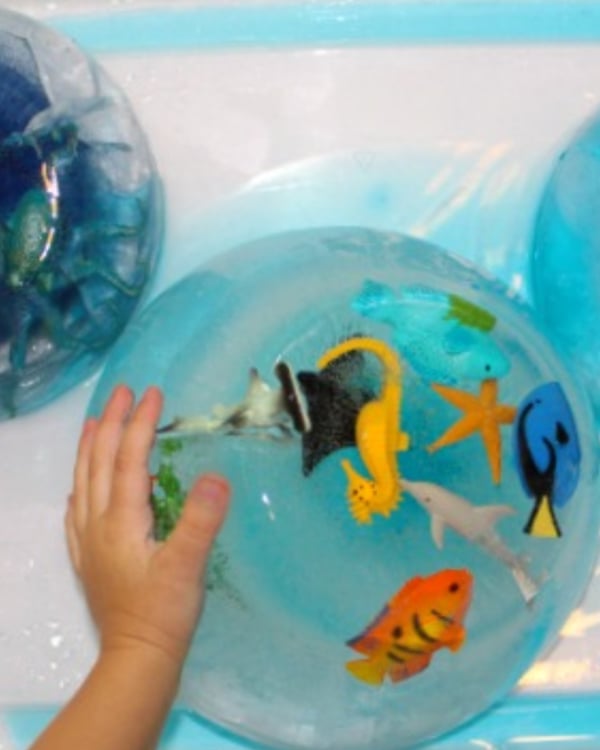
Frozen Under the Sea Sensory Play
Water play is always a fun sensory experience so by adding in a frozen component you are just upping the excitement. This frozen sensory bin is a perfect summer activity.
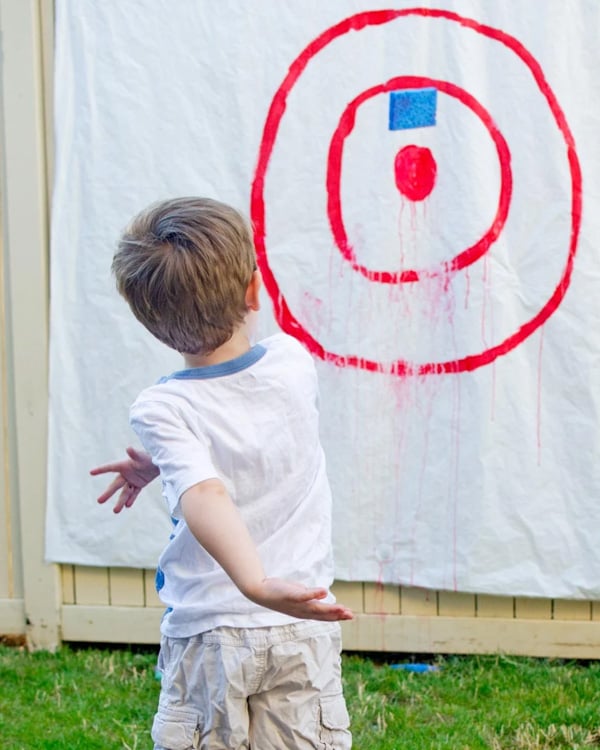
Sponge Targets
Want a seriously fun backyard activity for kids and adults? Try this game using dollar store sponges and a make-shift target.
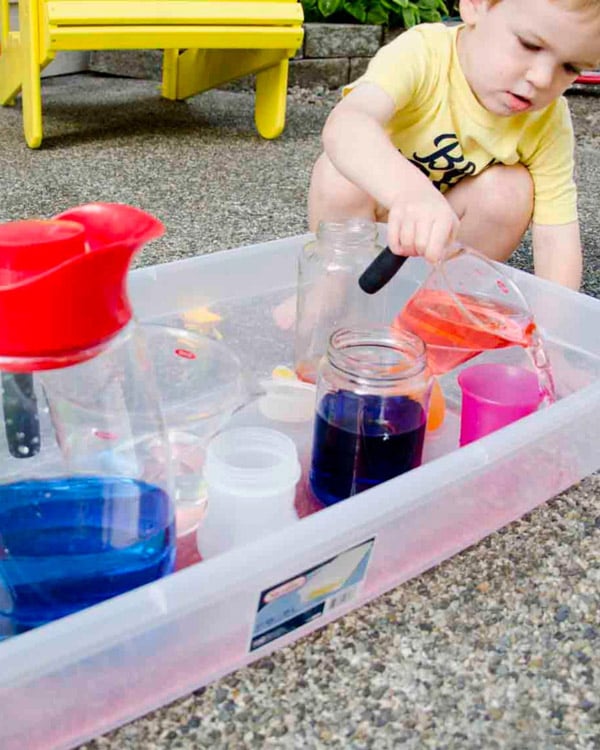
Pouring Station
This will forever be my go-to outdoor activity for kids: just let them pour water. Want it to be fancy? Dye the water. It’s the best.
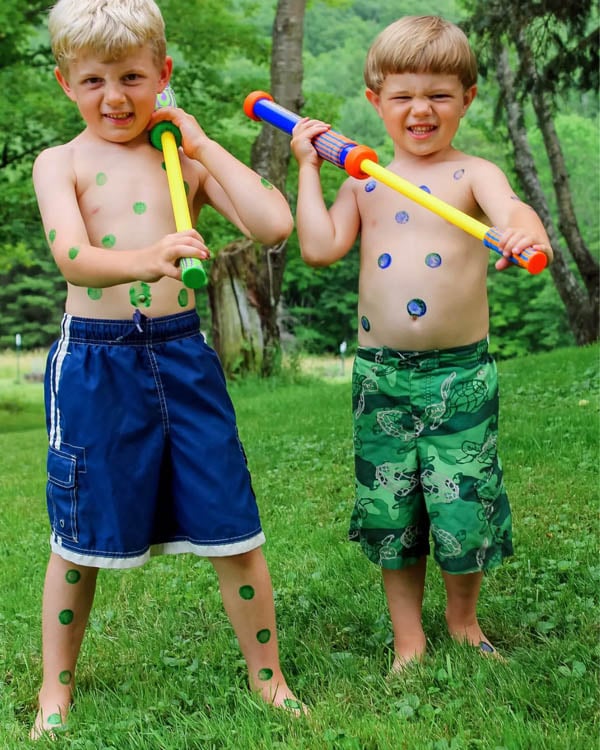
Water Blaster Games
Trying to find ideas for water blasters? This post has activities tailored made for blasters – kids will love these.
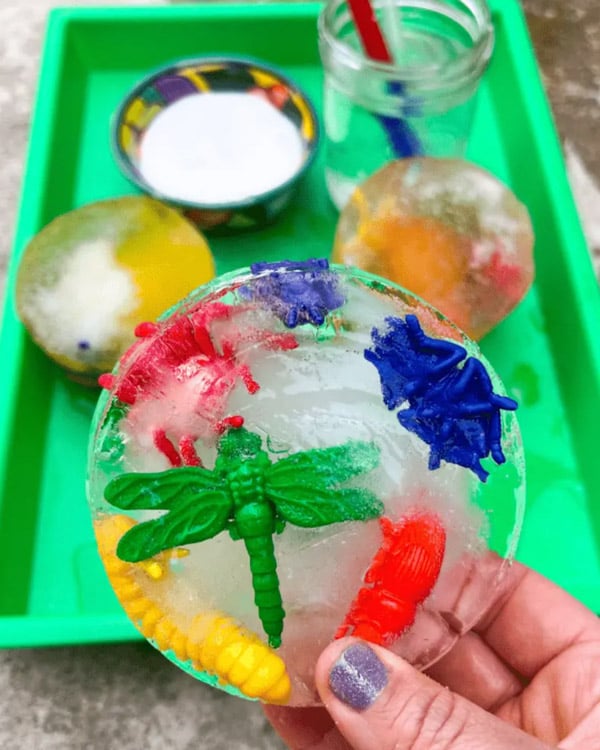
Insect Ice Excavation
Freezing toys in ice is a recipe to remember this summer. Kids love excavating and rescuing their toys.
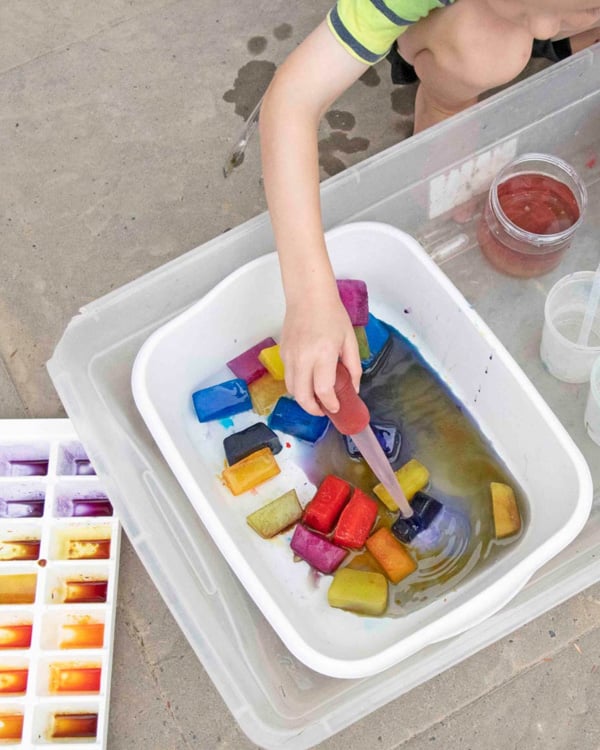
Colored Ice Bin
There is always a tray of colored ice in my freezer in the summer. Why? Because the second the day takes a turn or someone is having a rough time, I can bring out colored ice and lift the mood.
Superscript
60 Incredible Nature Play Ideas for Kids!
Here are 60 amazing ideas for exploring nature with your child through play, art and investigation!
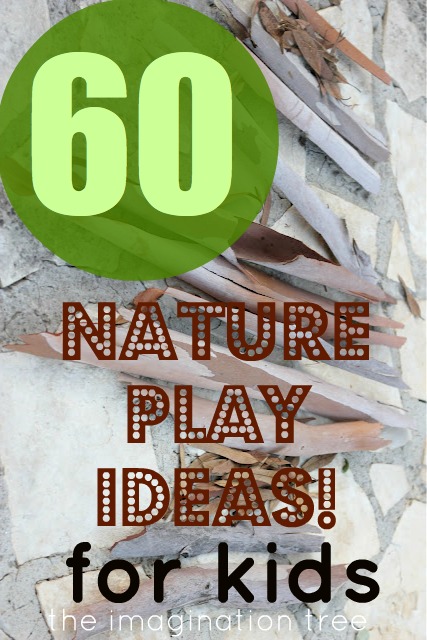
I recently gave a workshop for a nature play group, in the middle of the woods, about activities to do with your child that involve natural resources and that encourage interaction with the natural world. Here are those ideas that I gave in that talk, plus many more, with links to some fabulous articles from some talented writers around the web!
Mud
Use it to make a birds nest The Chocolate Muffin Tree
Concoct with it in a mud pie kitchen
Paint with it The Chocolate Muffin Tree
Have a princess mud tea party The Golden Gleam
Simply play with it Sun Hats and Wellie Boots
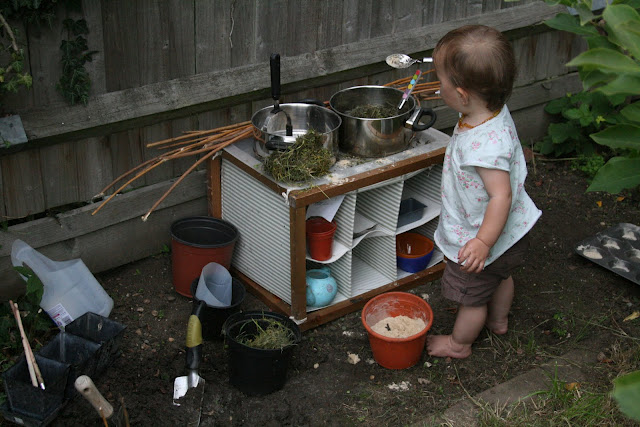
Sticks
Paint stick creatures Growling a Jeweled Rose
Make instruments, weave material, and play games with them The Good Long Road
Create a sistrum instrument from a branch Daria Music
Make your own blocks from driftwood Let the Children Play
Push them into play dough Mummy Musings and Mayhem
Wood and recycled materials sculptures Let the Children Play
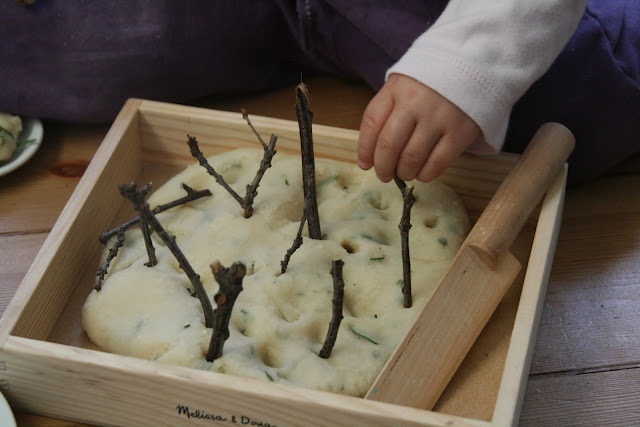
Stones
Make a rock collection In Lieu of Preschool
Collect rocks and write a journal Creative Family Fun
Paint them to make monsters Red Ted Art
Create a rock shop Let the Children Play
Simply sort and play with them
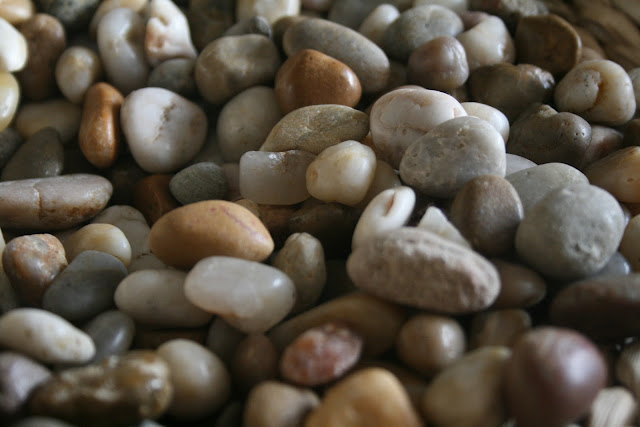
Leaves
Jump and throw leaves JDaniel4’s Mom
Create colourful prints Putti’s World
Laminate leaves for play and learning Sunhats and Wellie Boots
Paint them Putti’s World
Create some woodland people Red Ted Art
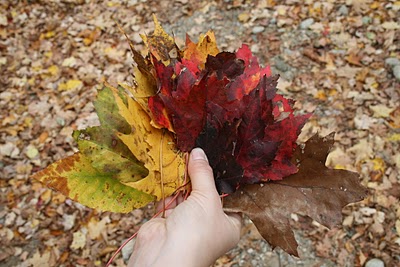
Flowers
Grow sunflowers Kids Activities Blog
Use them to make flower play dough NurtureStore
Make petal pictures Learn with Play at Home
Discover their magic tricks Creative Family Fun
Print with them Nurture Store
Make homemade lavender play dough
Grow a Sunflower Fort in the garden Let’s Lasso the Moon
Pound them to create beautiful art Rhythm of the Home
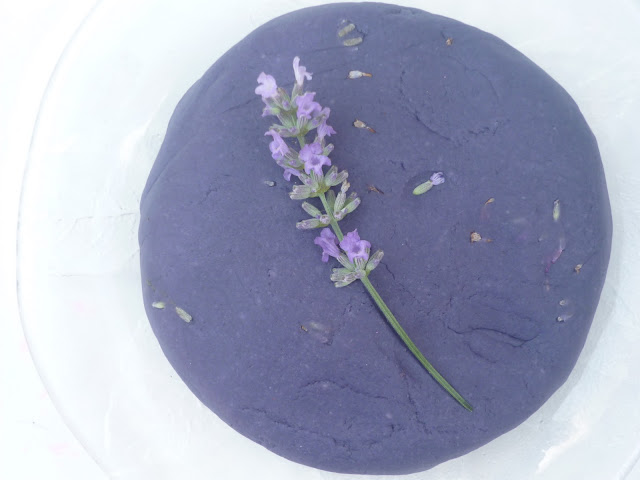
Pine Cones
Make a sculpture The Chocolate Muffin Tree
Serve them in a pretend play cafe
Create pine cone people Red Ted Art
Turn them into funny creatures Mummy, Mummy, Mum
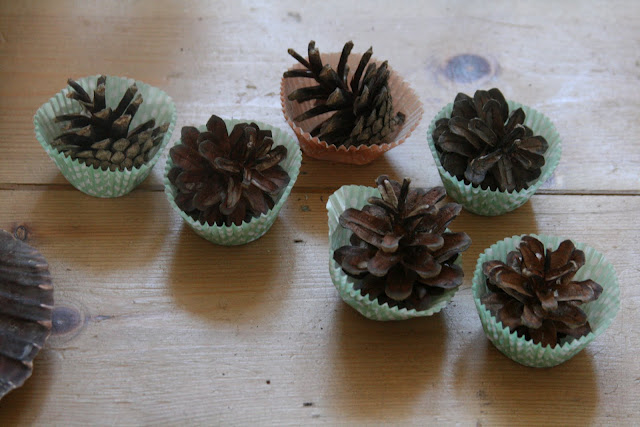
Water
Jump and Splash Word Play House
Make natural ice boats Reading Confetti
Paint with the rain Sunhats and Wellie Boots
Search through rock pools Tinkerlab
Make your own rock pool at home
20 Ways to explore the rain Sun Hats and Wellie Boots
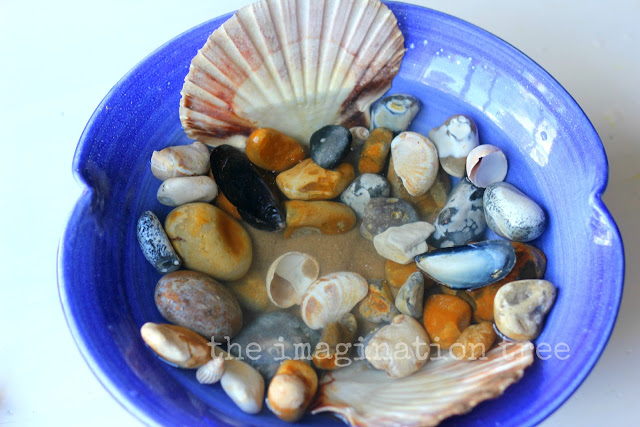
Collage
Make a contact paper collage using natural materials The Chocolate Muffin Tree
Add natural elements to the art table Let the Children Play
Stick leaves to make a crown
3D sculptural art Sun Hats and Wellie Boots
Nature Walks and Hunts
Search for colours Glittering Muffins
Try out geocoaching Messy Kids
Go on an outdoor sound hunt Sunhats and Wellie Boots
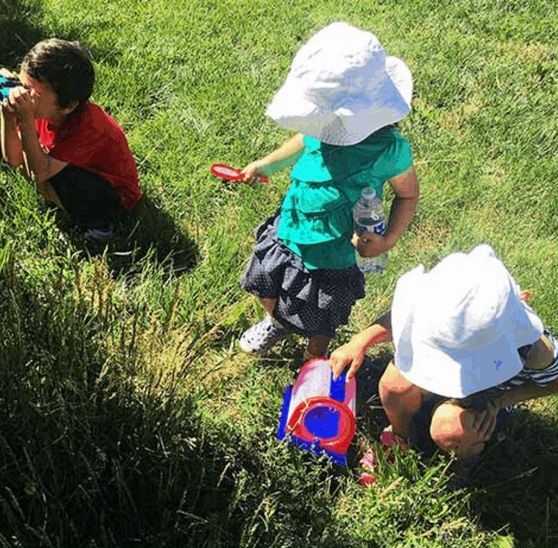
Land Art
Create art with natural materials in a tray Smiling Like Sunshine
Make pebble patterns on the beach Taming the Goblin
Make land art outside with found materials
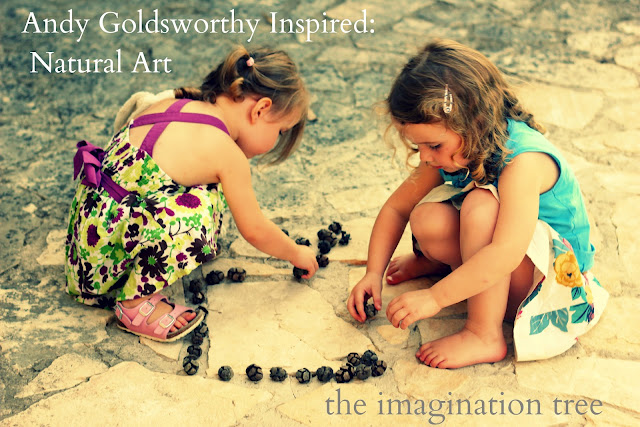
Sensory Tubs and Trays
Make a treasure basket for babies with natural materials
Make a scented nature tub The Good Long Road
Explore natural textures Growing a Jeweled Rose
Autumn Sensory Tray Pre-School Play
Make a gardening sensory tub for garden centre pretend play
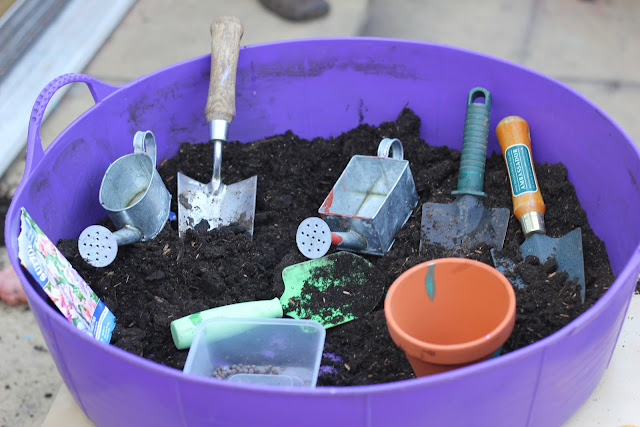
Small World Play
Dinosaur land with beans and plants
Frog pond with water and rocks Let the Children Play

For the days that you can’t get outdoors and explore nature first hand, go and gather some natural materials from your local woods, fields or beach and gets creative at home! Bring the nature home and let the connection with the natural world continue whatever the weather.

Play, Learn and Create With Backyard STEAM:
The Ultimate Guide
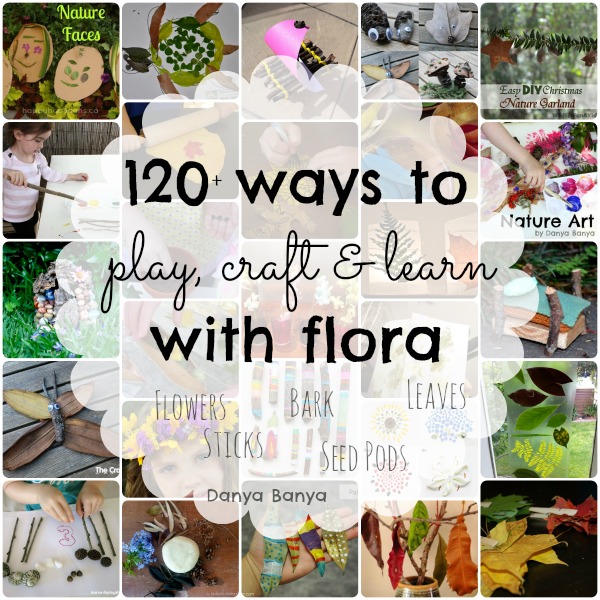
No worries, I have over 120 ideas for you. As part of a series called the Ultimate Guide to 50 Craft Materials, I’m sharing with you how you can play, create and learn using leaves, flowers, sticks, seed pods and bark. Danya Banya’s Ultimate Guide to Crafting with Flora.
You can draw or paint on flowers, leaves, bark and seed pods
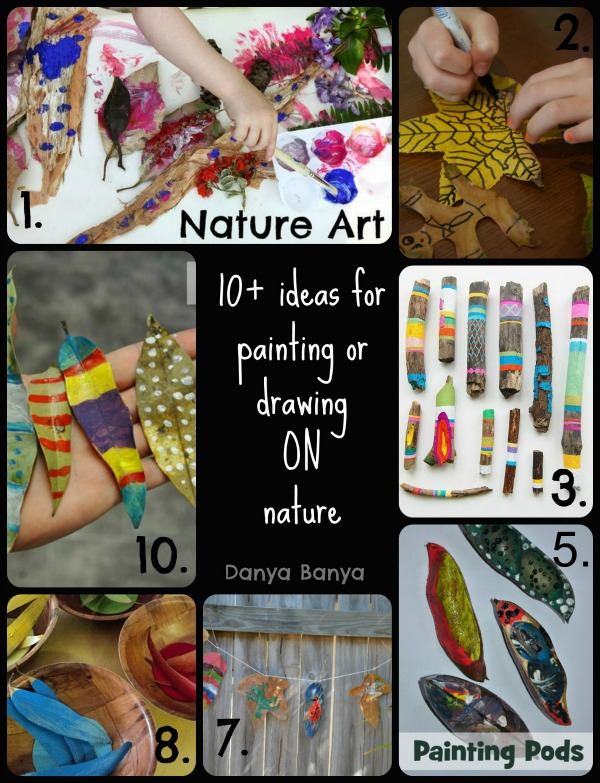
1. Nature Art by Danya Banya
2. Learning With Leaves by Laughing Kids Learn
3. Painted Sticks by Be A Fun Mum
4. Flower Stencil Spray Painting by Learn with Play at Home
5. Painting Seed Pods by Mother Natured
6. Leaf Art by A Little Learning for Two
7. Using Nature as Your Canvas by Mother Natured
8. Painted Leaves by A Little Learning for Two
9. Painting on Seed Pods by Danya Banya
10. Paint Leaves by Be A Fun Mum
You can paint with flowers, leaves and sticks instead of a brush
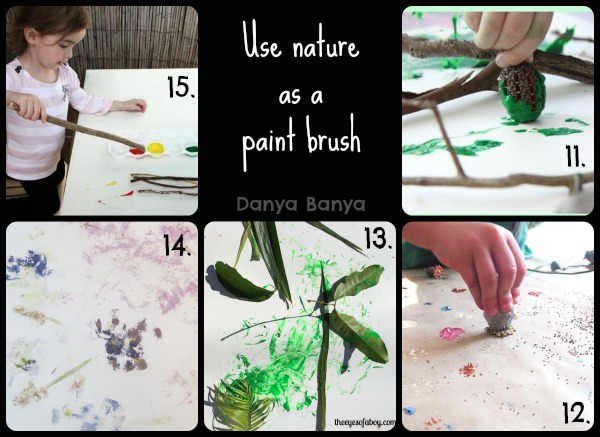
11. Painting with Nature (and a Peg) by Danya Banya
12. Poppy Seed Pod Painting by Happy Whimsical Hearts
13. Painting with Leaves by The Eyes of a Boy
14. It’s Flower Paint by Happy Whimsical Hearts
15. Painting With (and On) Sticks by Danya Banya
You can create jewellery
that any parent would be proud of
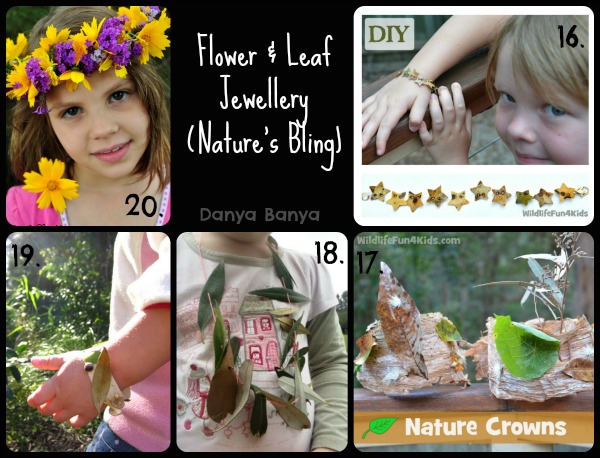
16. DIY Nature Bracelet by Wildlife Fun 4 Kids
17. Nature Crowns by Wildlife Fun 4 Kids
18. Threading Leaves by A Little Learning for Two
19. Nature Bracelet Making by Paint on the Ceiling
20. Floral Wreath by Be A Fun Mum
You can make an awesome collage
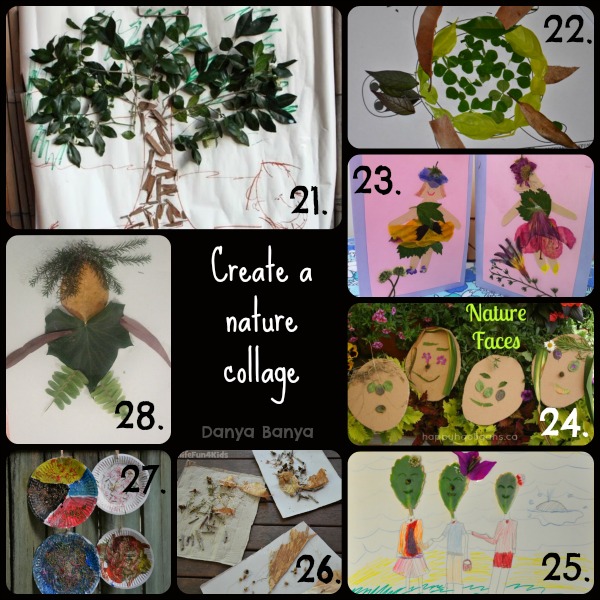
21. Tree Collage by Danya Banya
22. Colour With Nature by Wildlife Fun 4 Kids
23. Flower Fairy Cards by Just for Daisy
24. Nature Faces by Happy Hooligans
25. Leaf Art by Be A Fun Mum
26. Invitation to Play With Nature by Wildlife Fun 4 Kids
27. Nature’s Glitter by Wildlife Fun 4 Kids
28. Fun with Leaves by My Little Bookcase
You can laminate, contact, press or laminate flowers and leaves to preserve and examine them
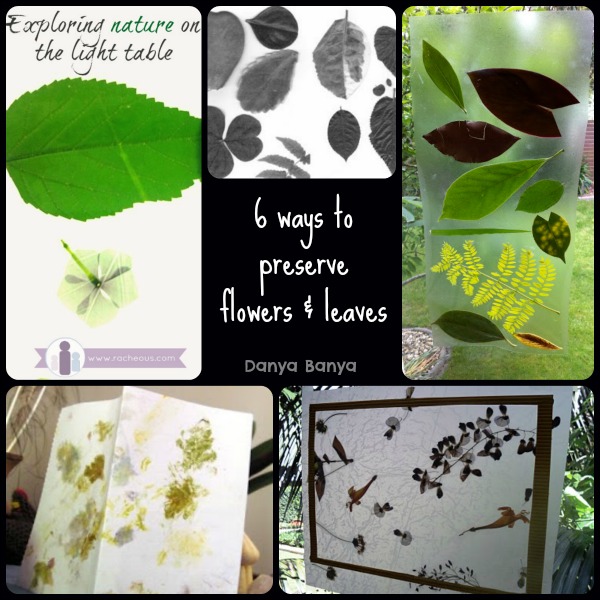
29. Nature on the Light Table by Racheous – Lovable Learning
30. Leafy Inspiration by Hinterland Mama
31. Contacted Leaves by Laughing Kids Learn
32. Wax Paper Flower Hangings by A Little Learning For Two
33. Hammer Pressed Flower Prints by Hinterland Mama
34. DIY Flower Press by Just for Daisy
You can make Martha-Stewart-esque home decorations
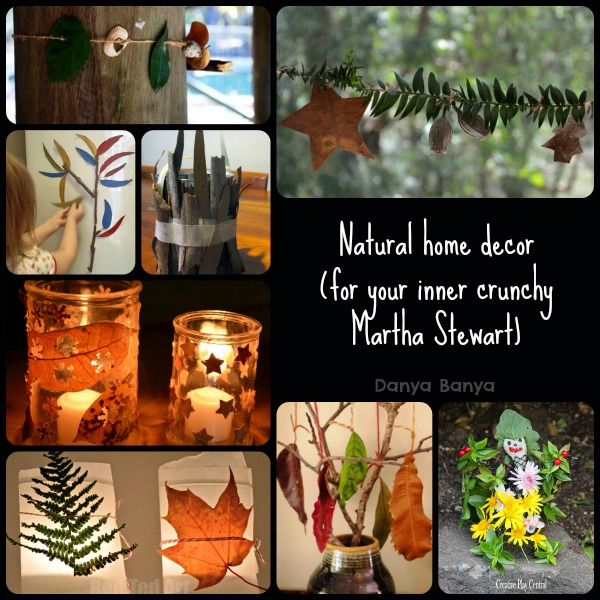
35. Gum Tree Organisers by Happy Whimsical Hearts
36. Hole Punched Nature Candle Holders by Wildlife Fun 4 Kids
37. Tree Jewellery by Hinterland Mama
38. Magnetic Tree by A Little Learning for Two
39. Creating with Flowers, Leaves & Twigs by Creative Play Central
40. Nature Fridge Magnets by Hinterland Mama
41. Jingle Sticks by Danya Banya (post coming soon)
42. Christmas Nature Garland by Wildlife Fun 4 Kids
43. Outdoor Fairy Tree by A Little Learning For Two
44. Nature Spider Web by Wildlife Fun 4 Kids
45. Sticks by Hinterland Mama
46. Simple Lanterns by Red Ted Art
47. Nature mobile by Danya Banya
You can make dolls, houses, boats etc – great for roleplay
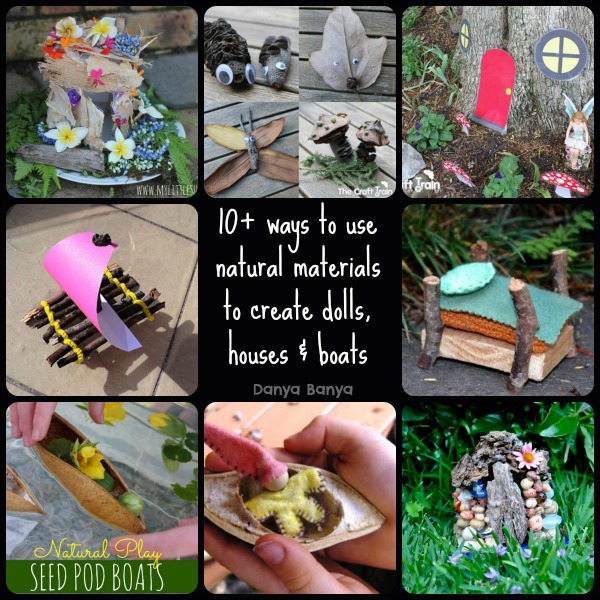
48. Bush Critters by The Craft Train
49. Seed Pod Boats by One Perfect Day
50. Stick People by Danya Banya
51. Stick Raft by A Little Learning for Two
52. Pebble Fairy House by Be A Fun Mum
53. Seed Pod Cradles by Hinterland Mama
54. Fairy Garden by The Craft Train
55. Gumnut Babies by My Little Bookcase
56. Natural Fairy House by Be A Fun Mum
57. Fairy Furniture by Hinterland Mama
58. Playing with Seed Pods by Hinterland Mama
You can add natural materials to play dough, clay and other sensory dough play
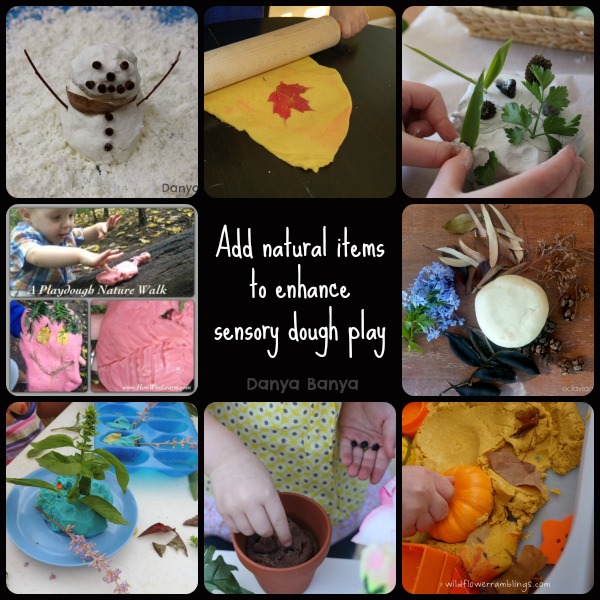
59. Play Snow by Danya Banya
60. Making an Impression by The Inspired Treehouse
61. Exploring Clay with Preschoolers by One Perfect Day
62. Garden Treasures Play Dough by Octavia and Vicky
63. Fall Sensory Bin by Wildflower Ramblings
64. Play Dough Garden Centre by The Imagination Tree
65. Sensory Florist Fun by Mummy Musings and Mayhem
66. A Play Dough Nature Walk by How Wee Learn
You can make learning fun!
Flora or botany can be used in all sorts of ways to play and learn about art, maths, science, language, colour, categorization, the environment, team work…
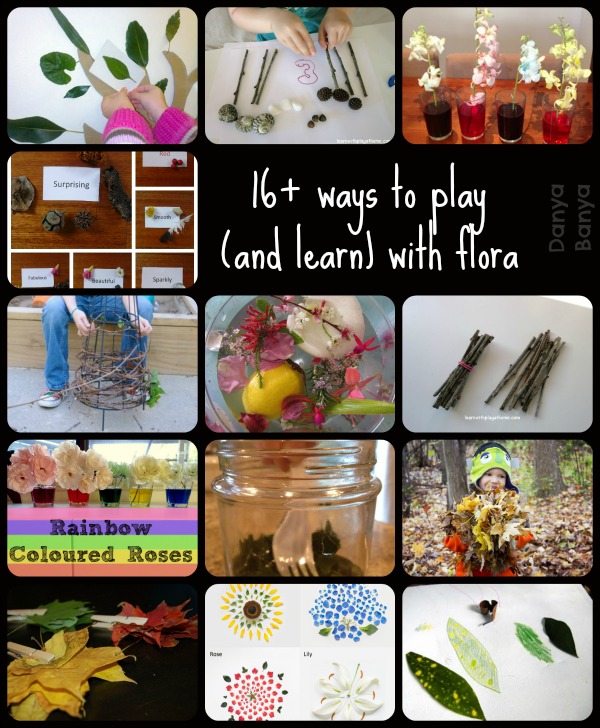
67. Leaf Matching by A Little Learning for Two
68. Numbers and Natural Materials by Learn with Play at Home
69. Flower Experiment by Ladybug’s Spots
70. Number Recognition Play by Danya Banya
71. Introducing Adjectives by My Little Bookcase
72. Patrick Dougherty Inspired Sculpture Art by Artchoo!
73. Floating Art by Learn with Play at Home
74. Counting and Grouping with Sticks by Learn with Play at Home
75. Colour Changing Roses by Octavia and Vicky
76. Why Leaves Change Colour by How Wee Learn
77. Leaf Scramble by The Inspired Treehouse
78. Rainbow Leaves by Be A Fun Mum
79. Drawing Nature by Hinterland Mama
80. Leaf Categorisation by The Inspired Treehouse
81. Deconstructing Flowers by Be A Fun Mum
82. Acorn Hopscotch by The Inspired Treehouse